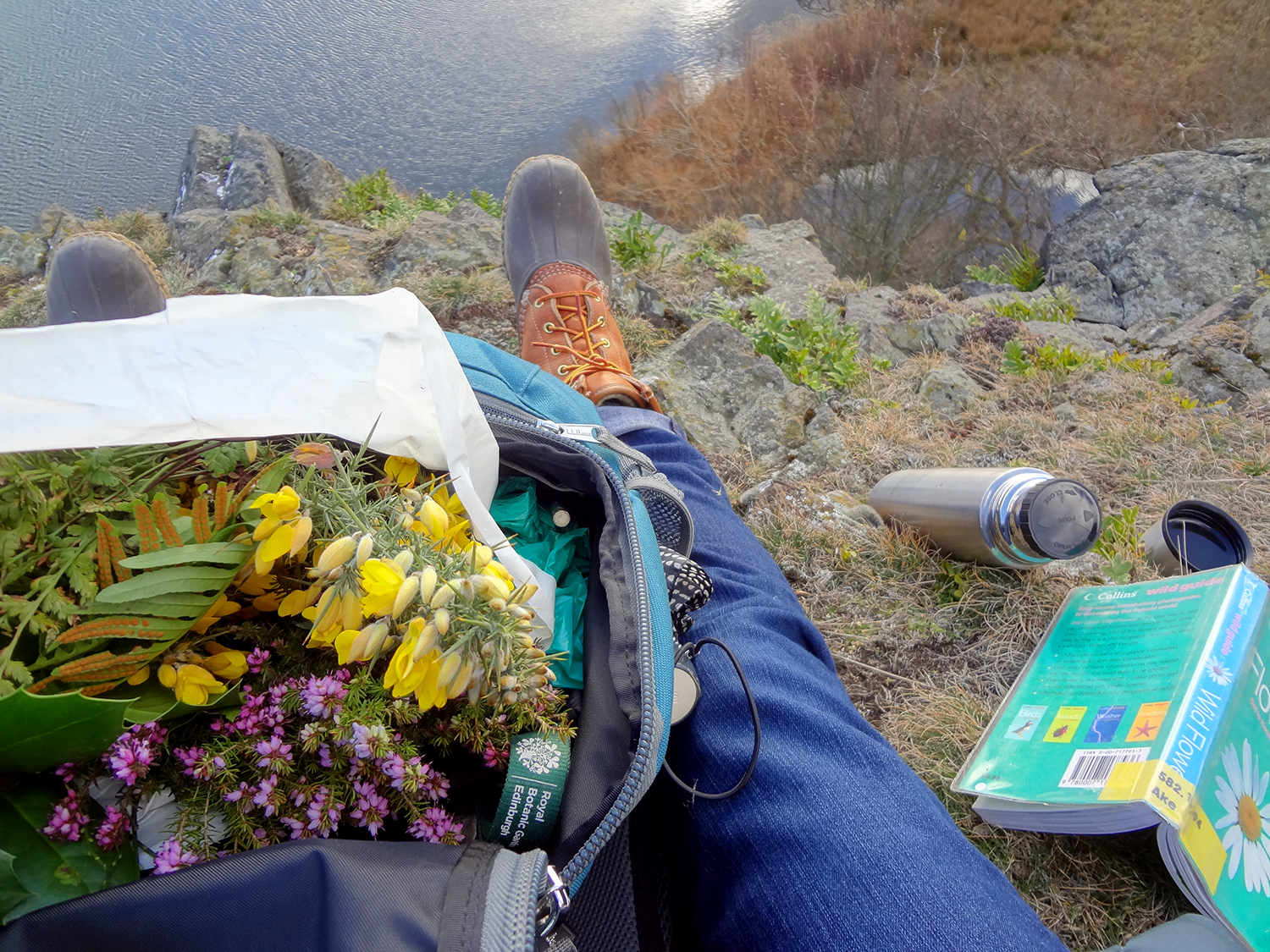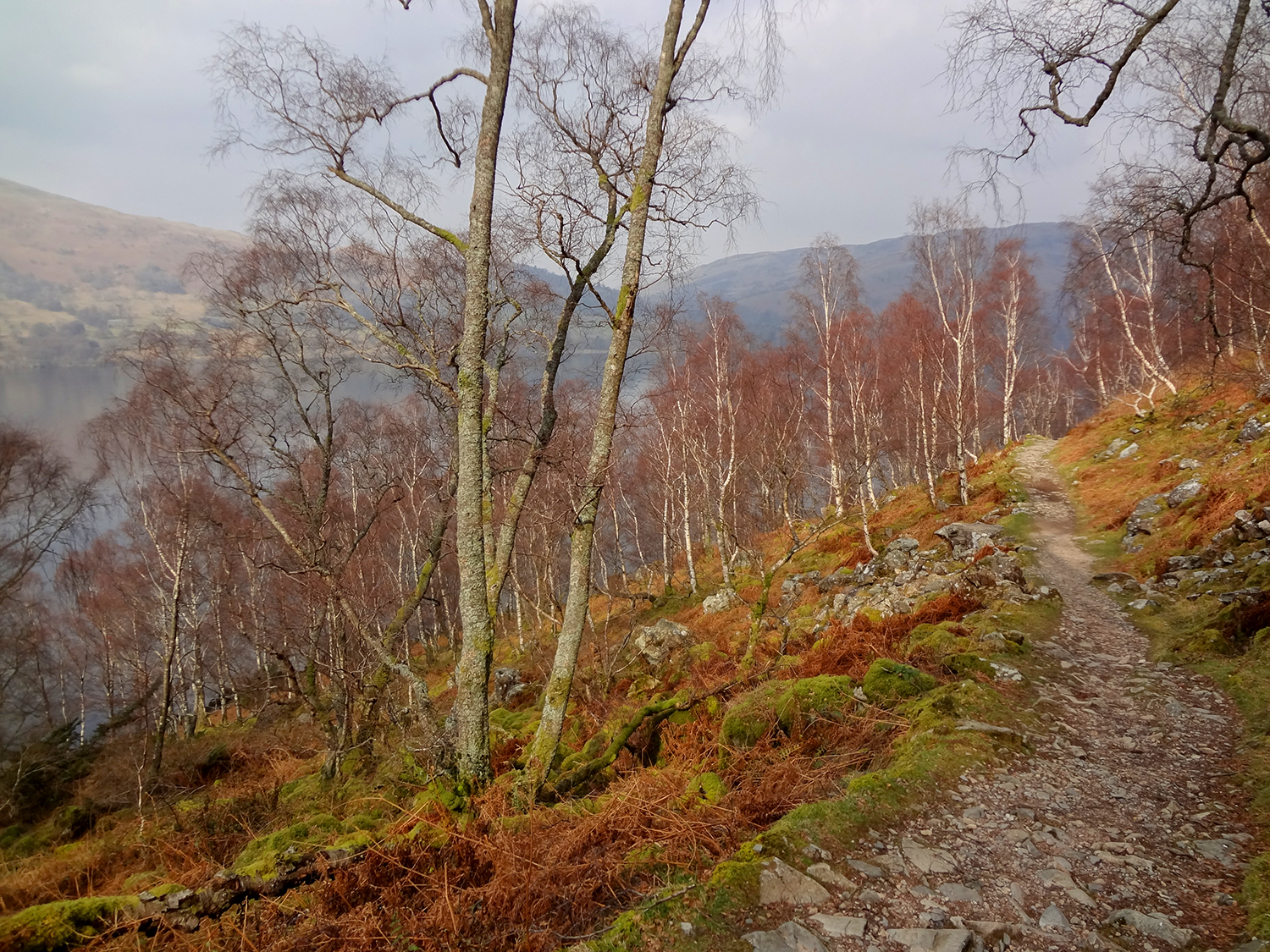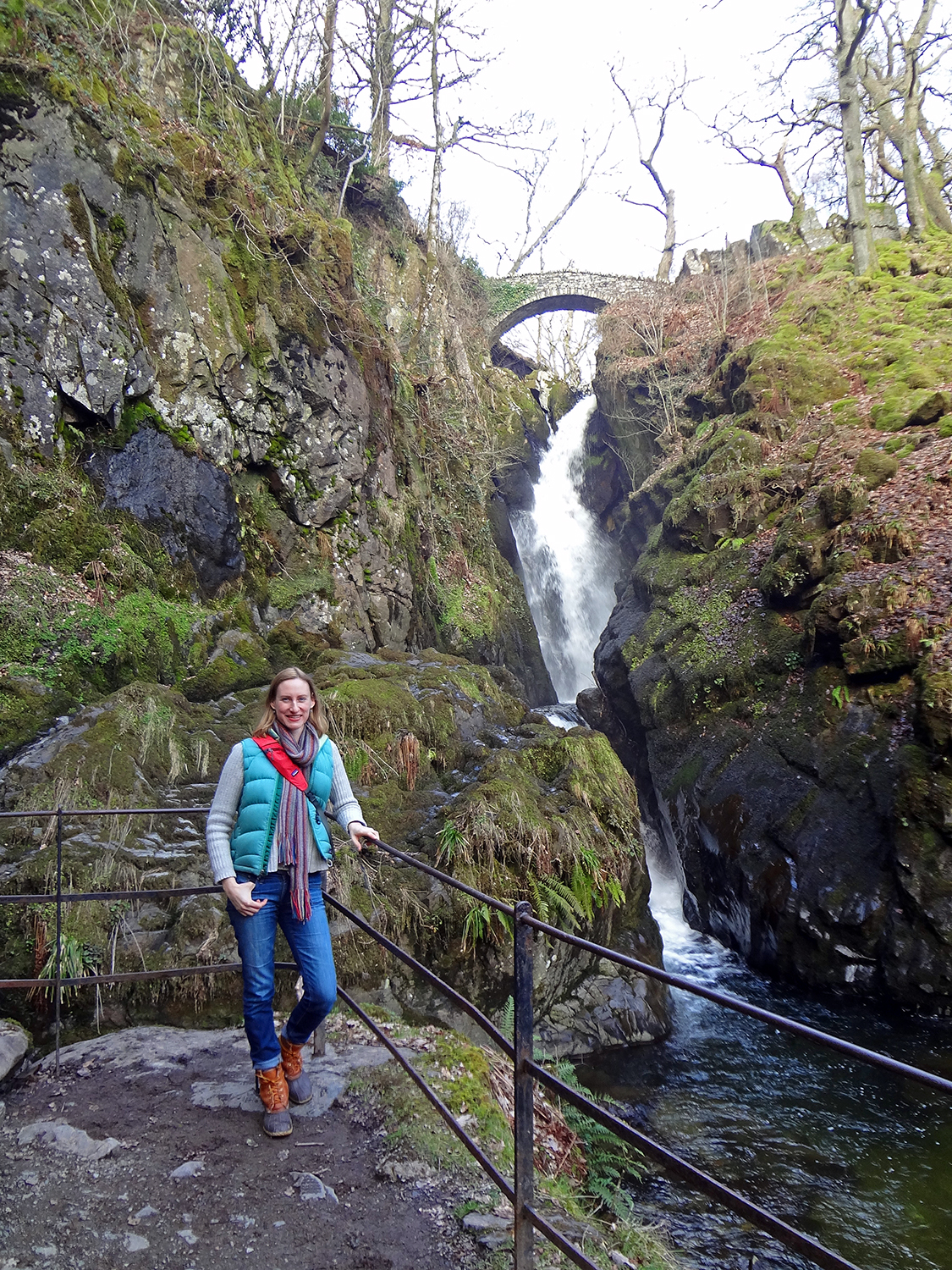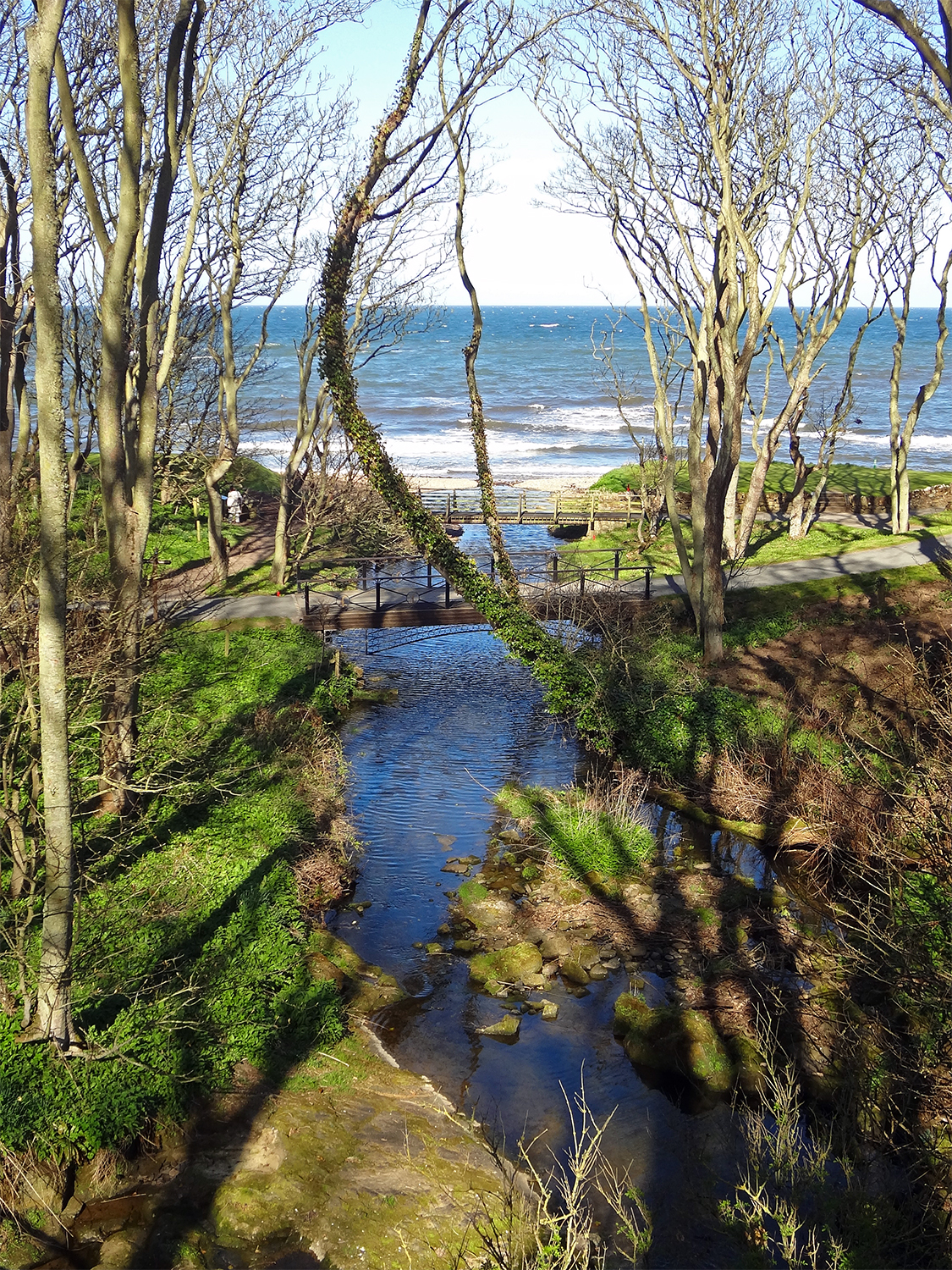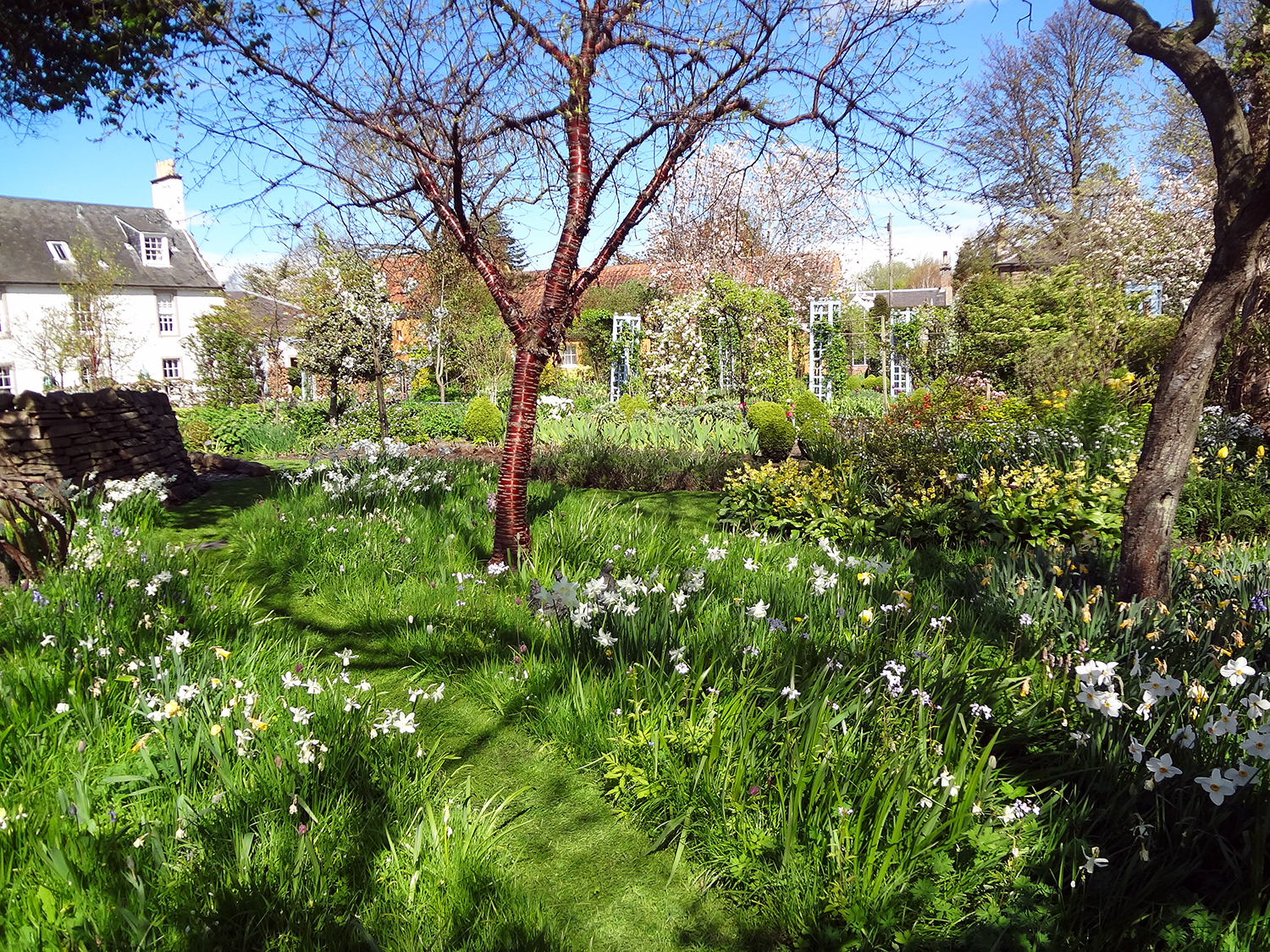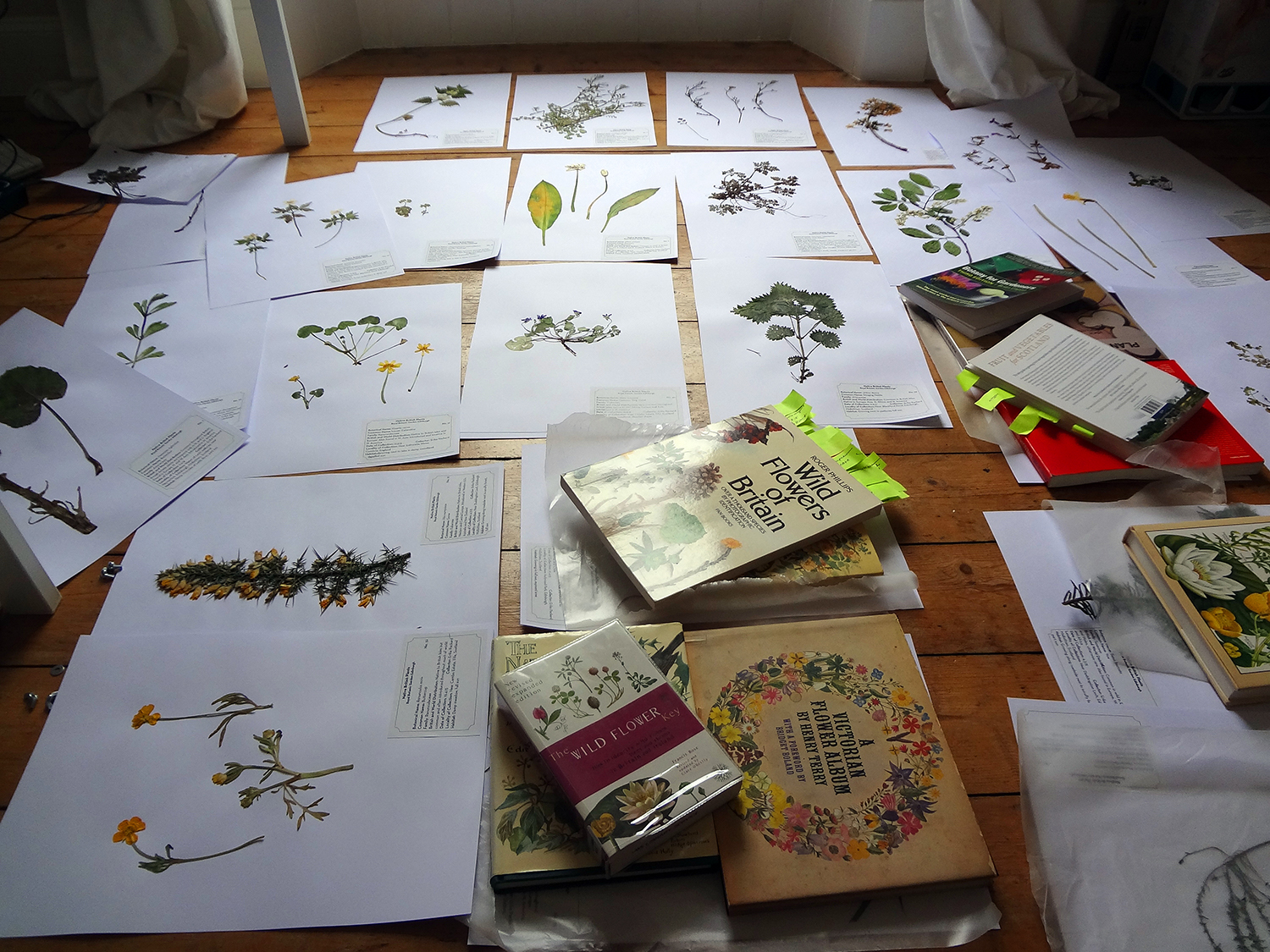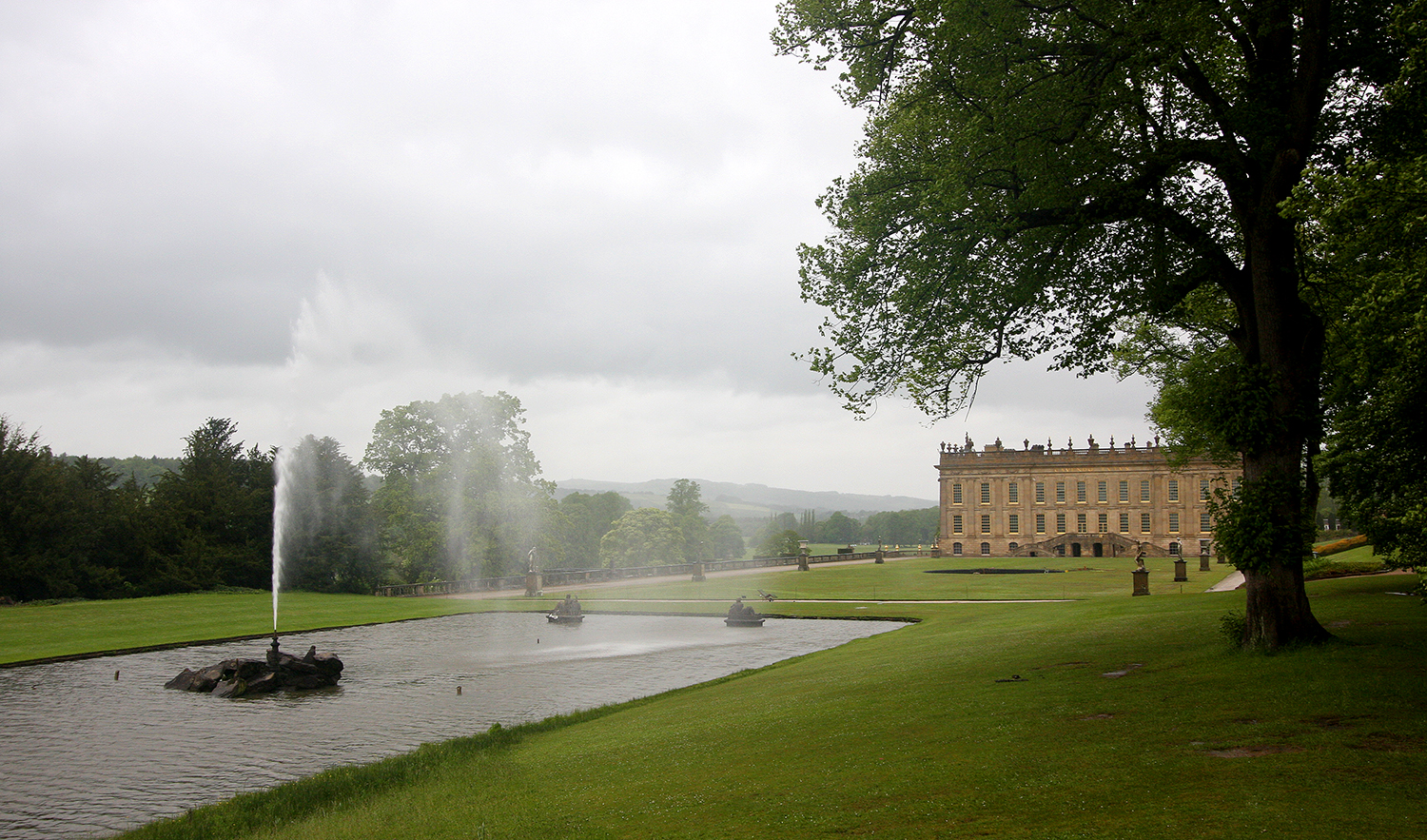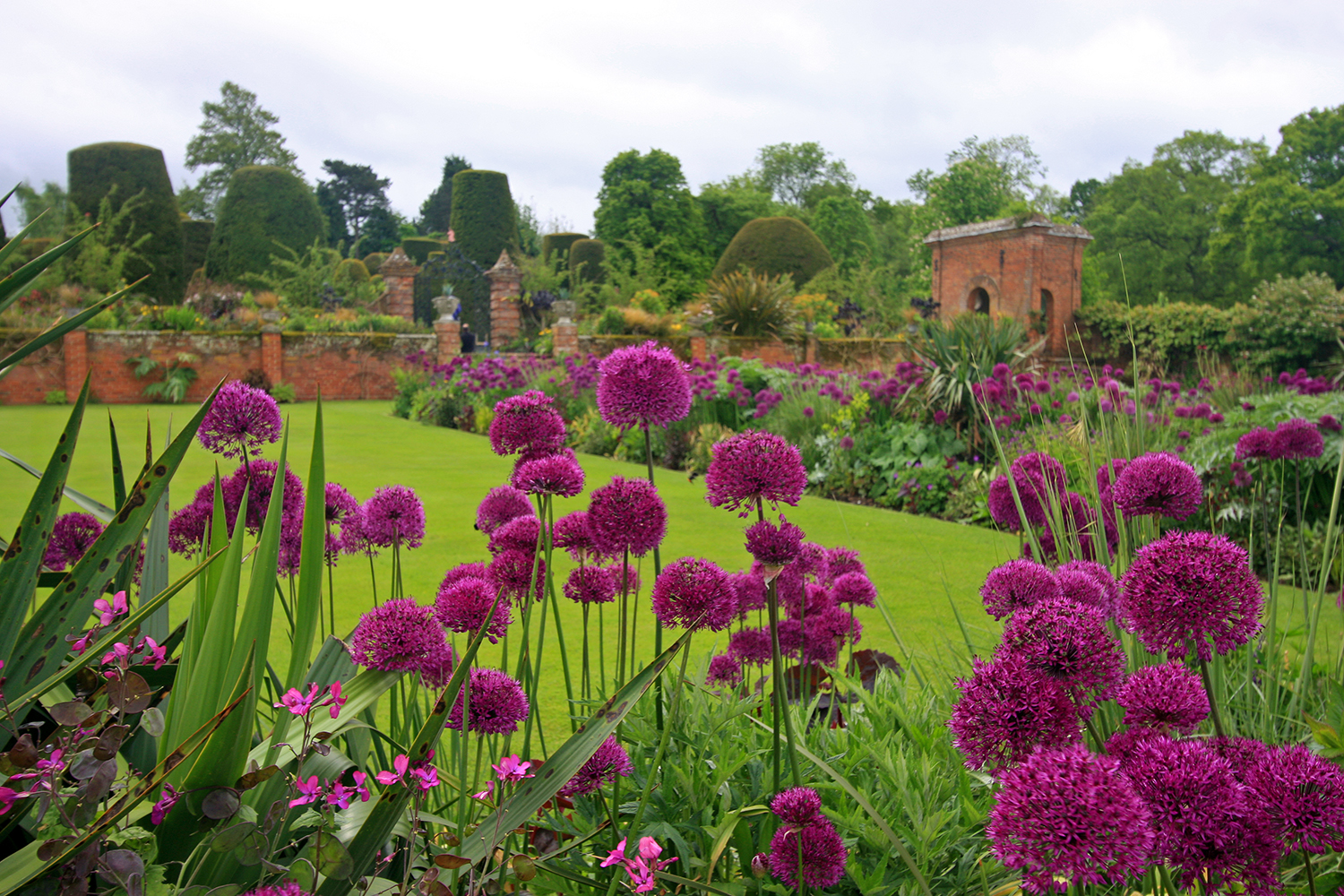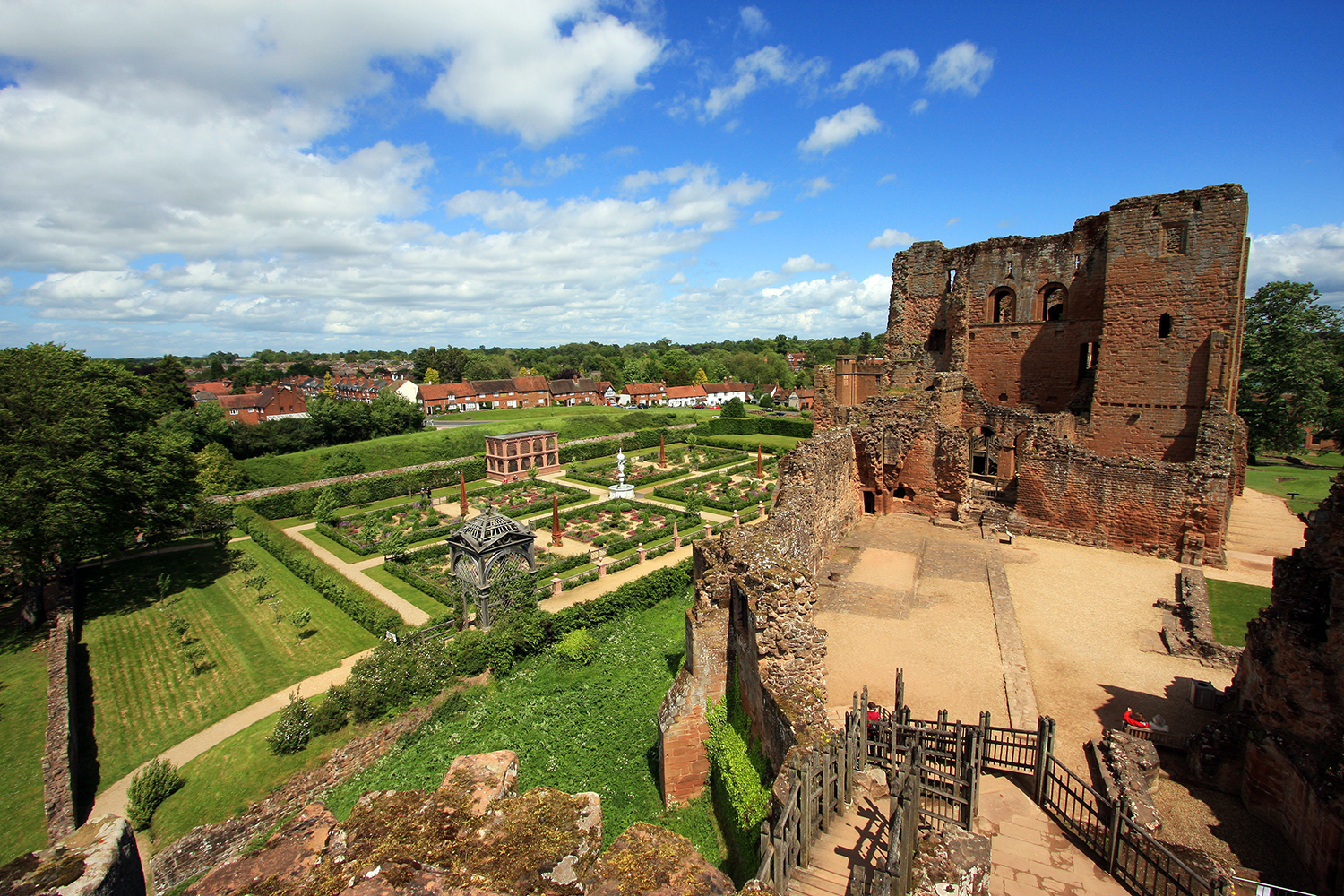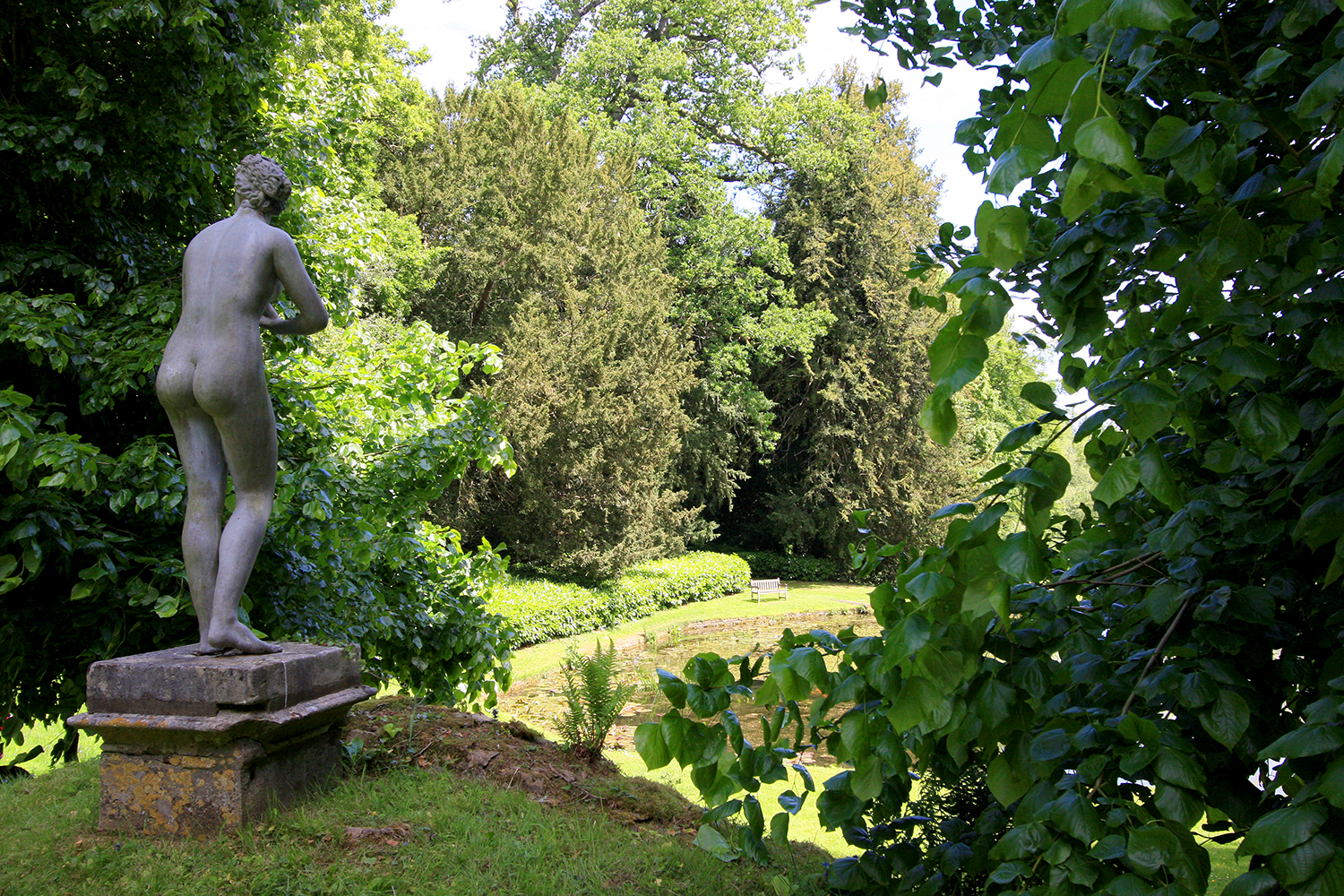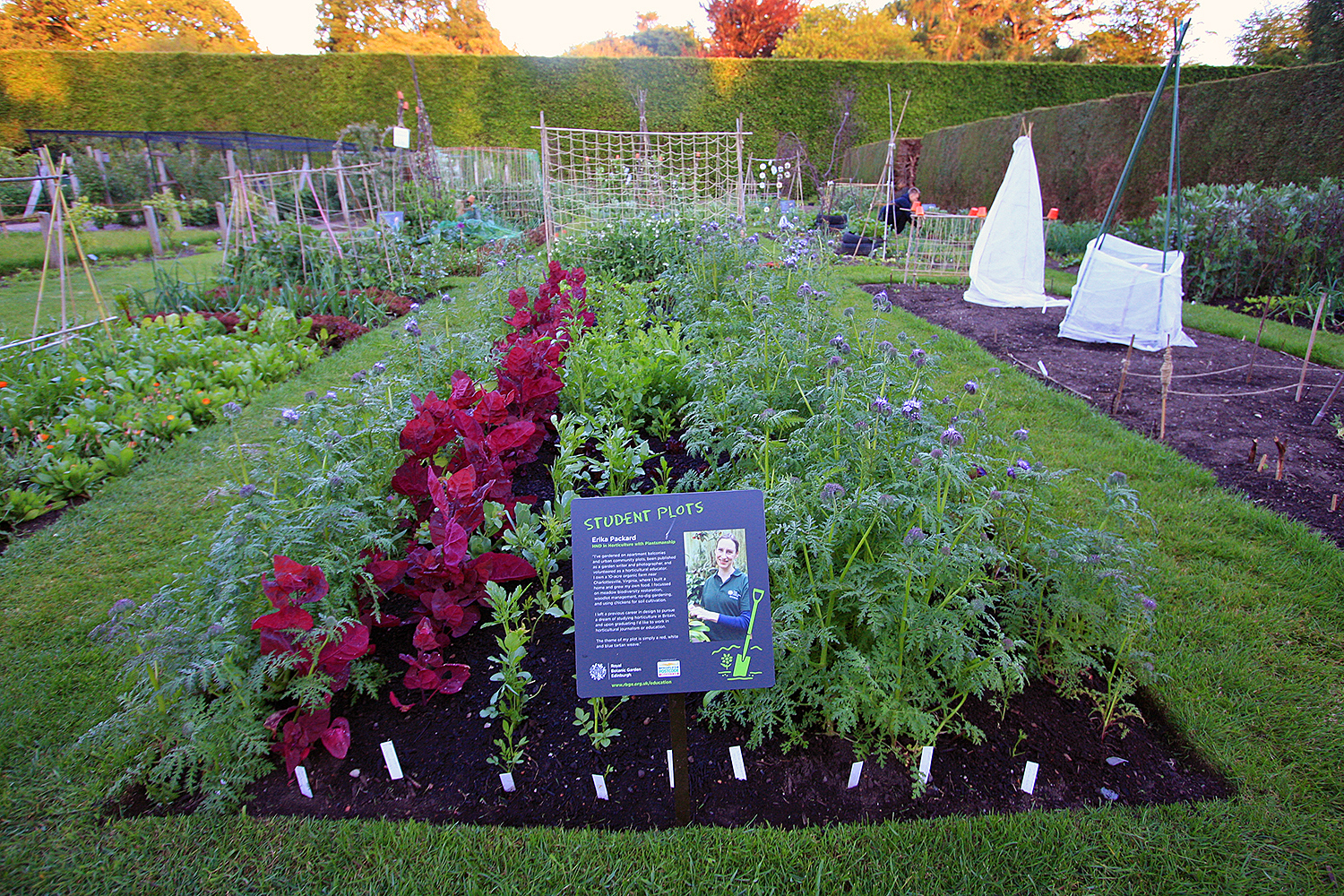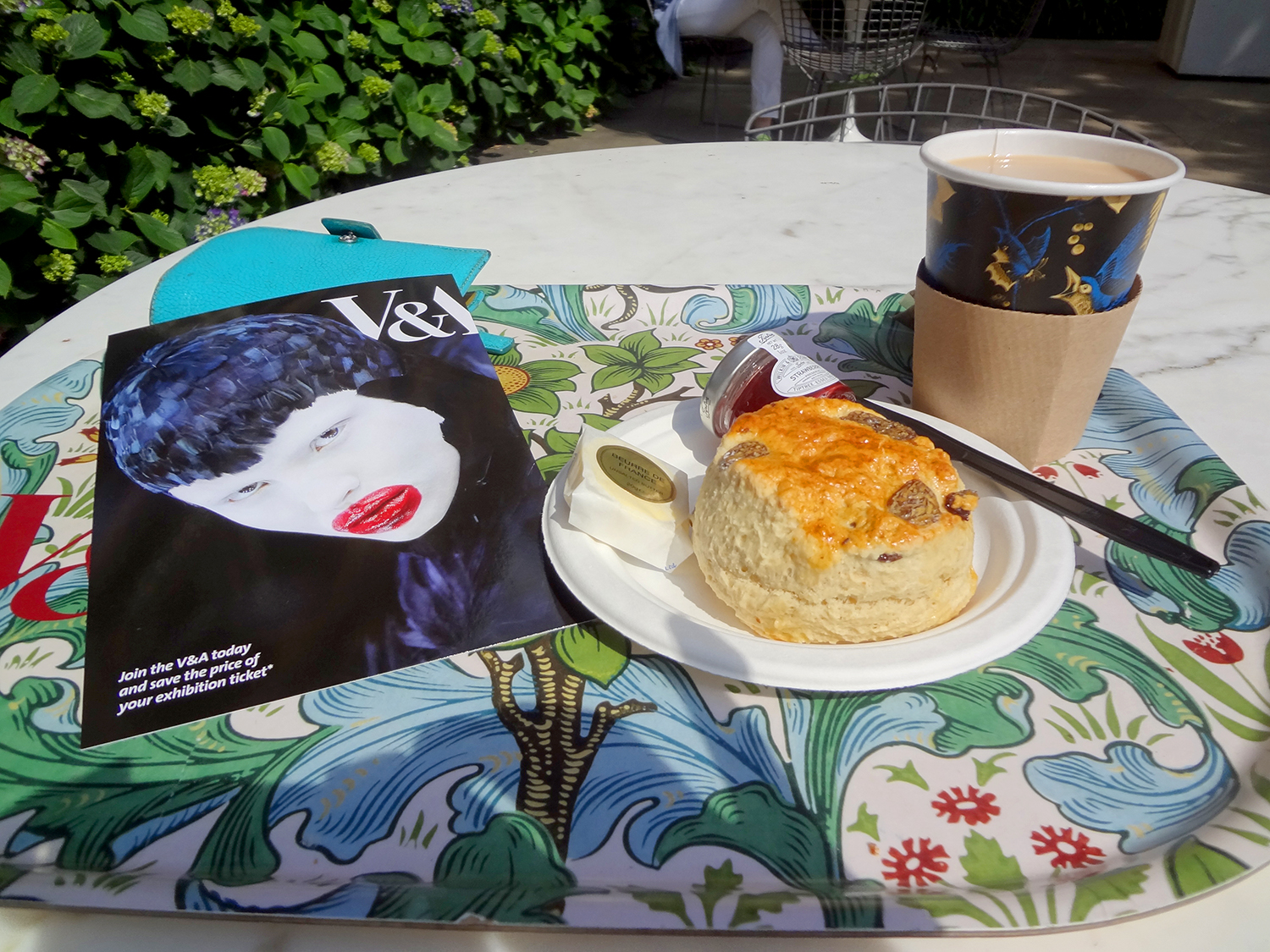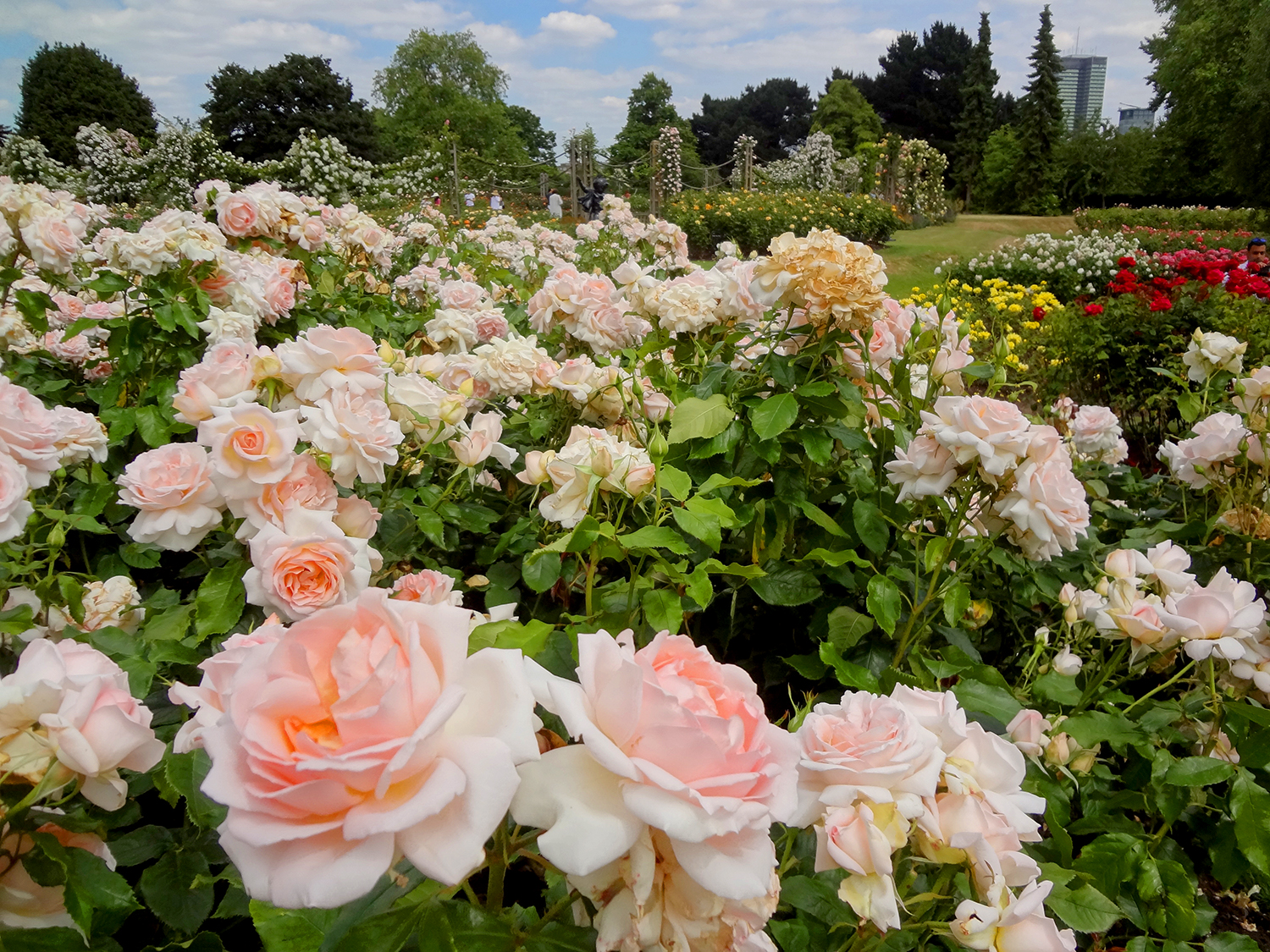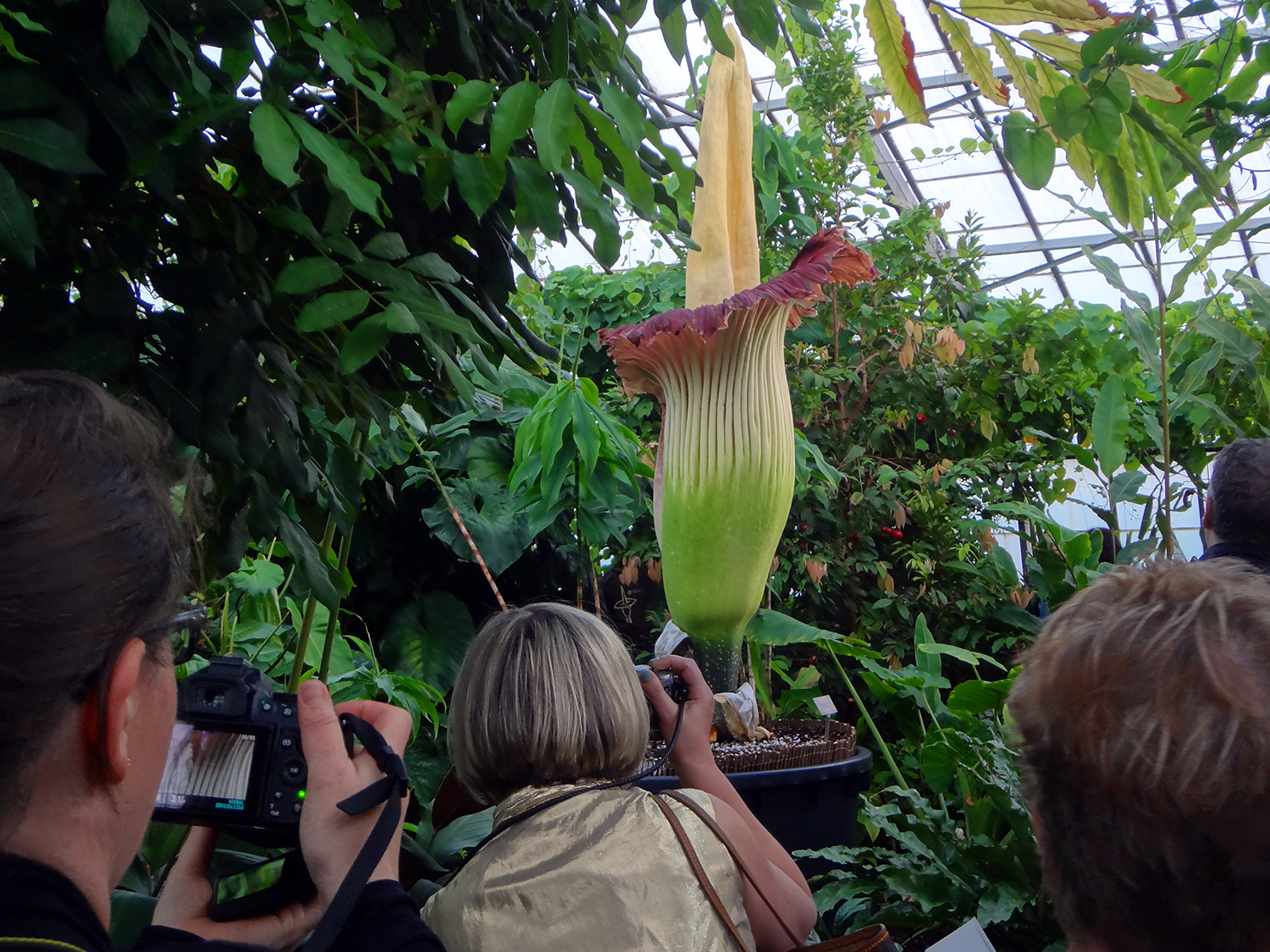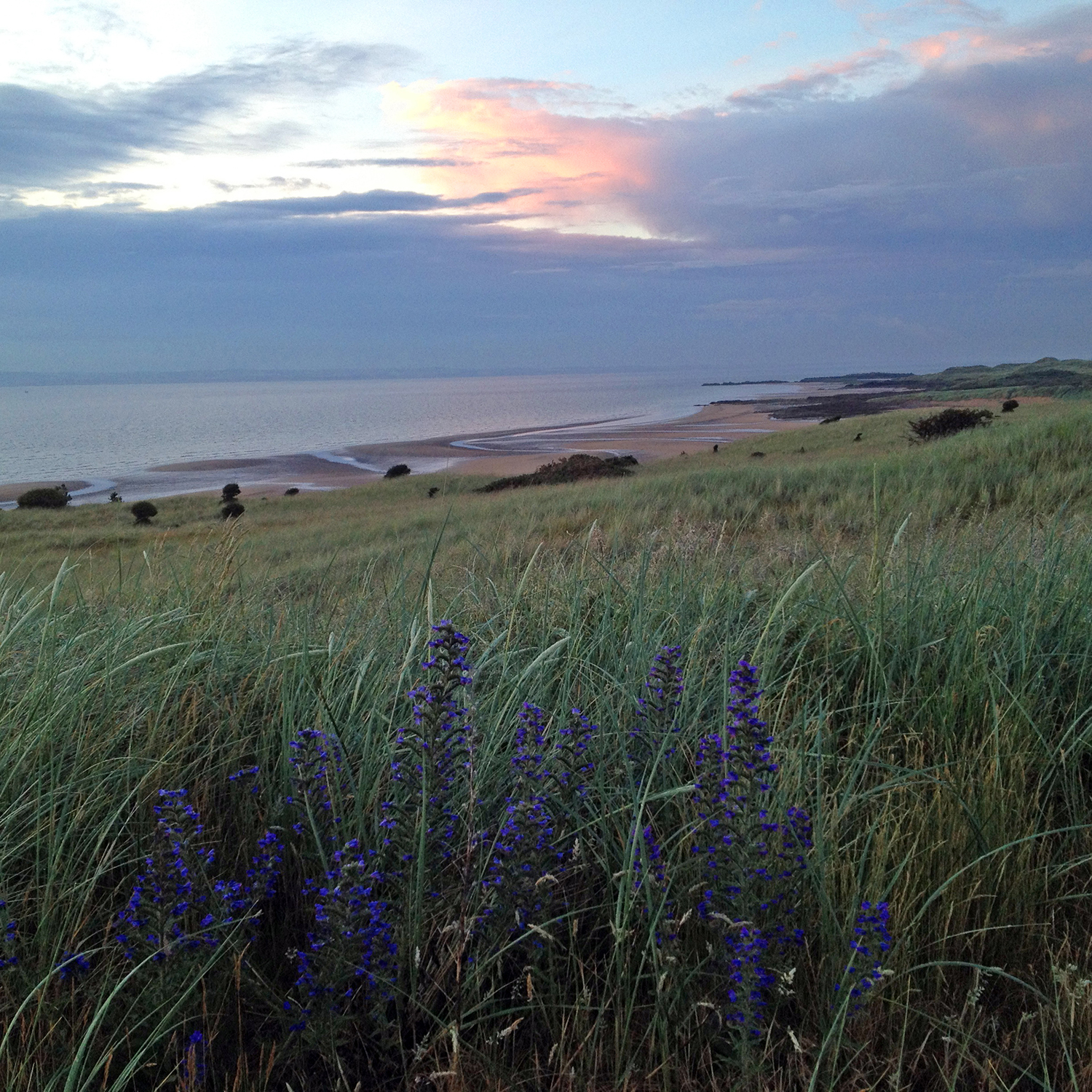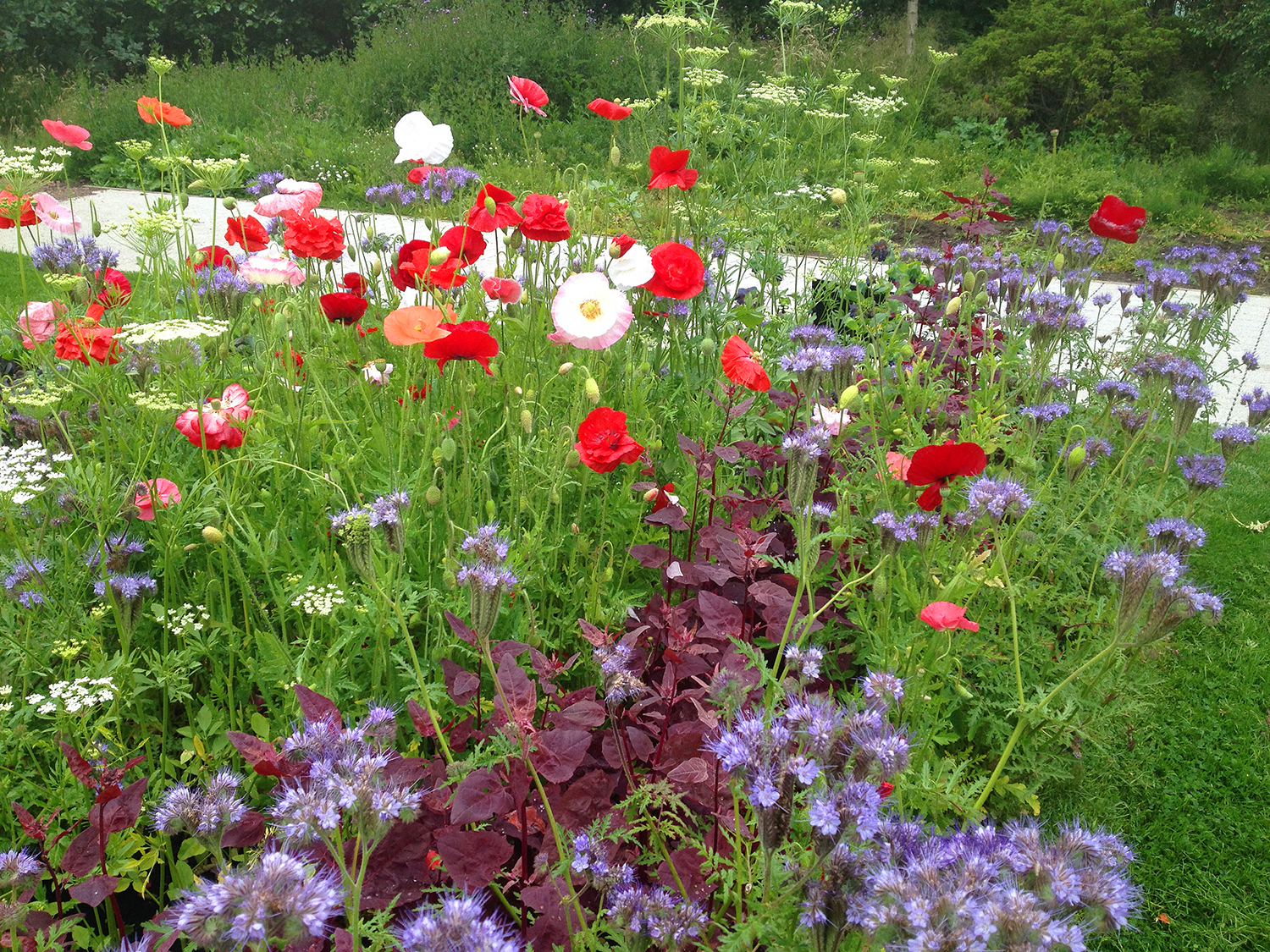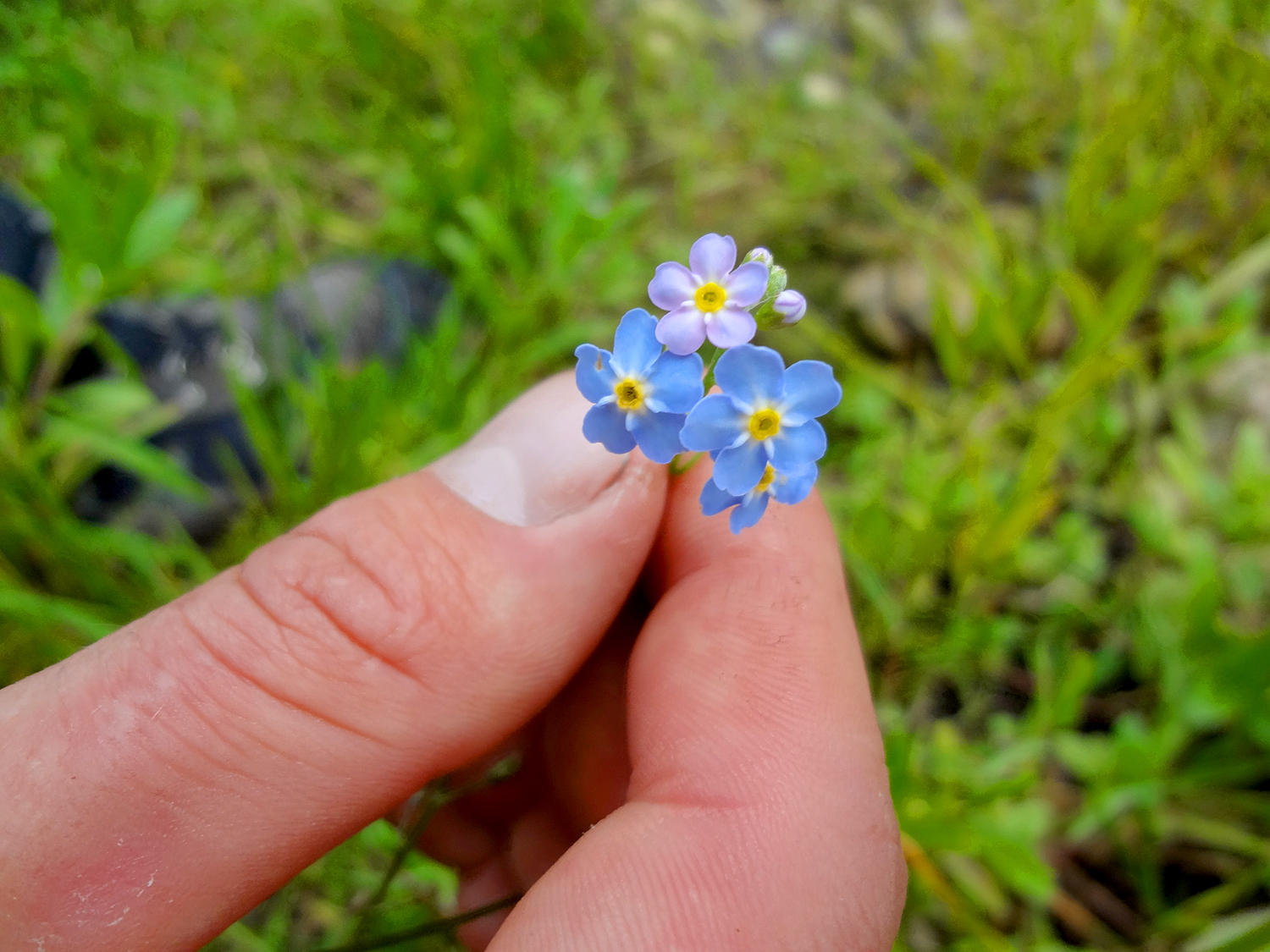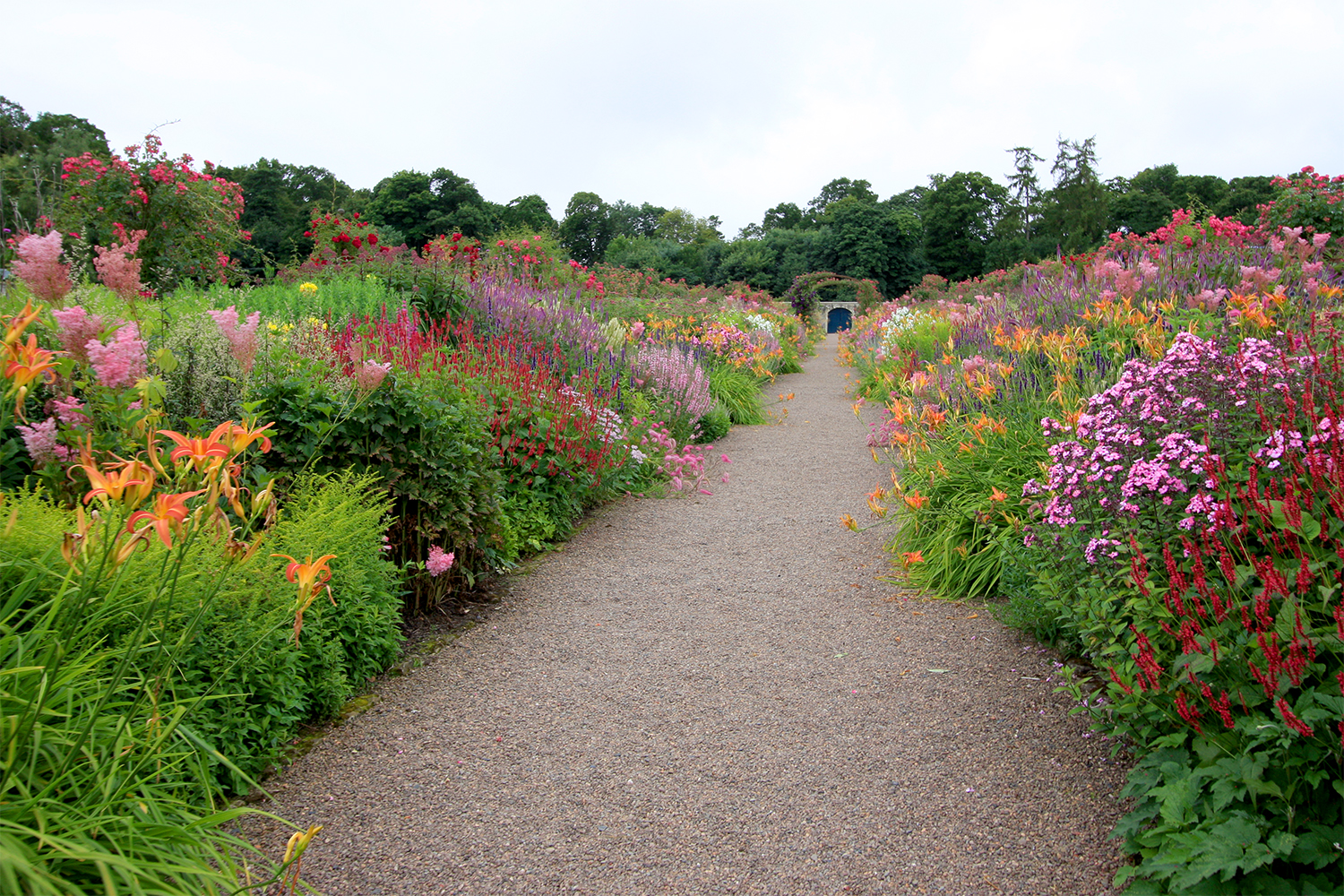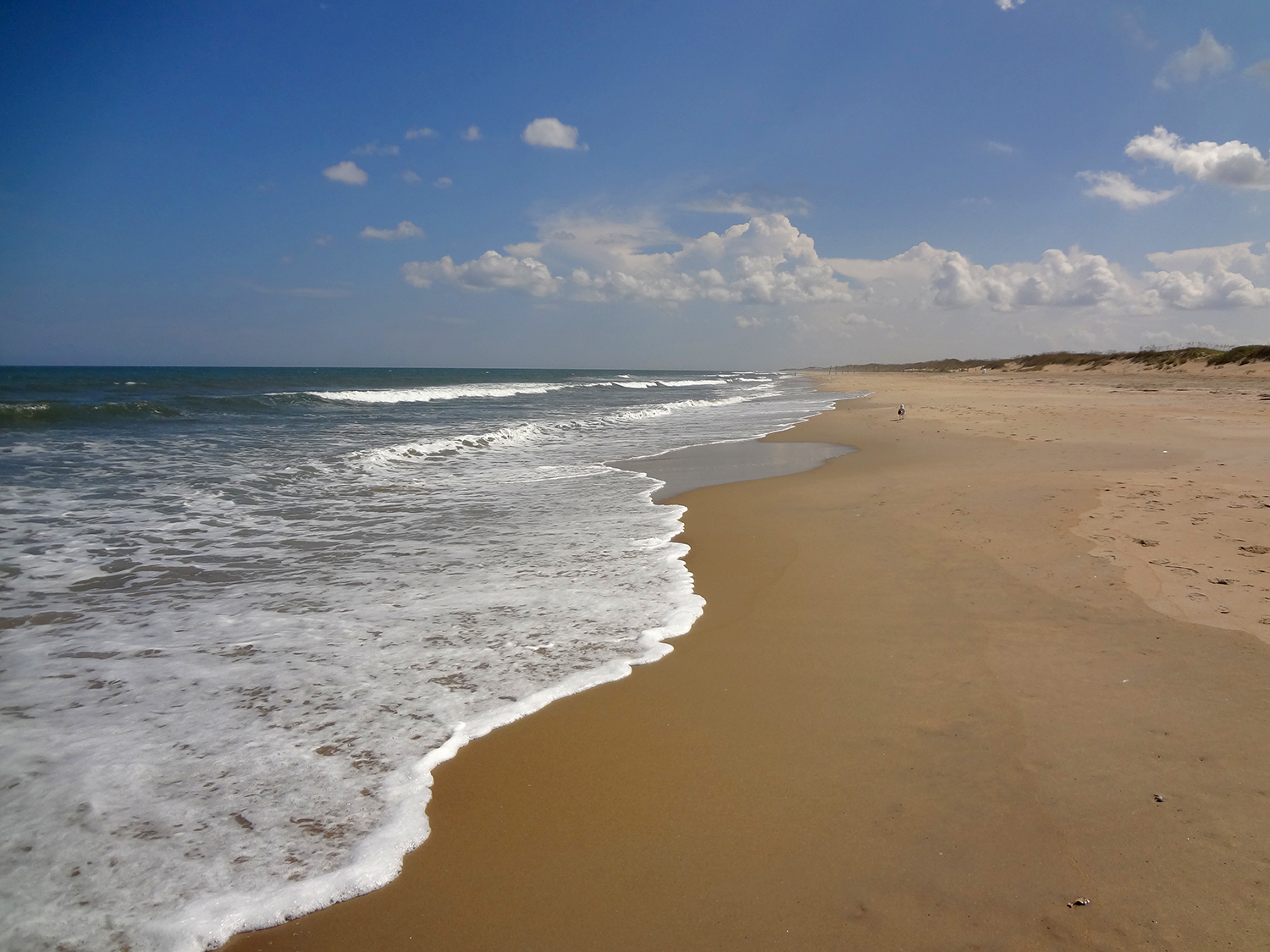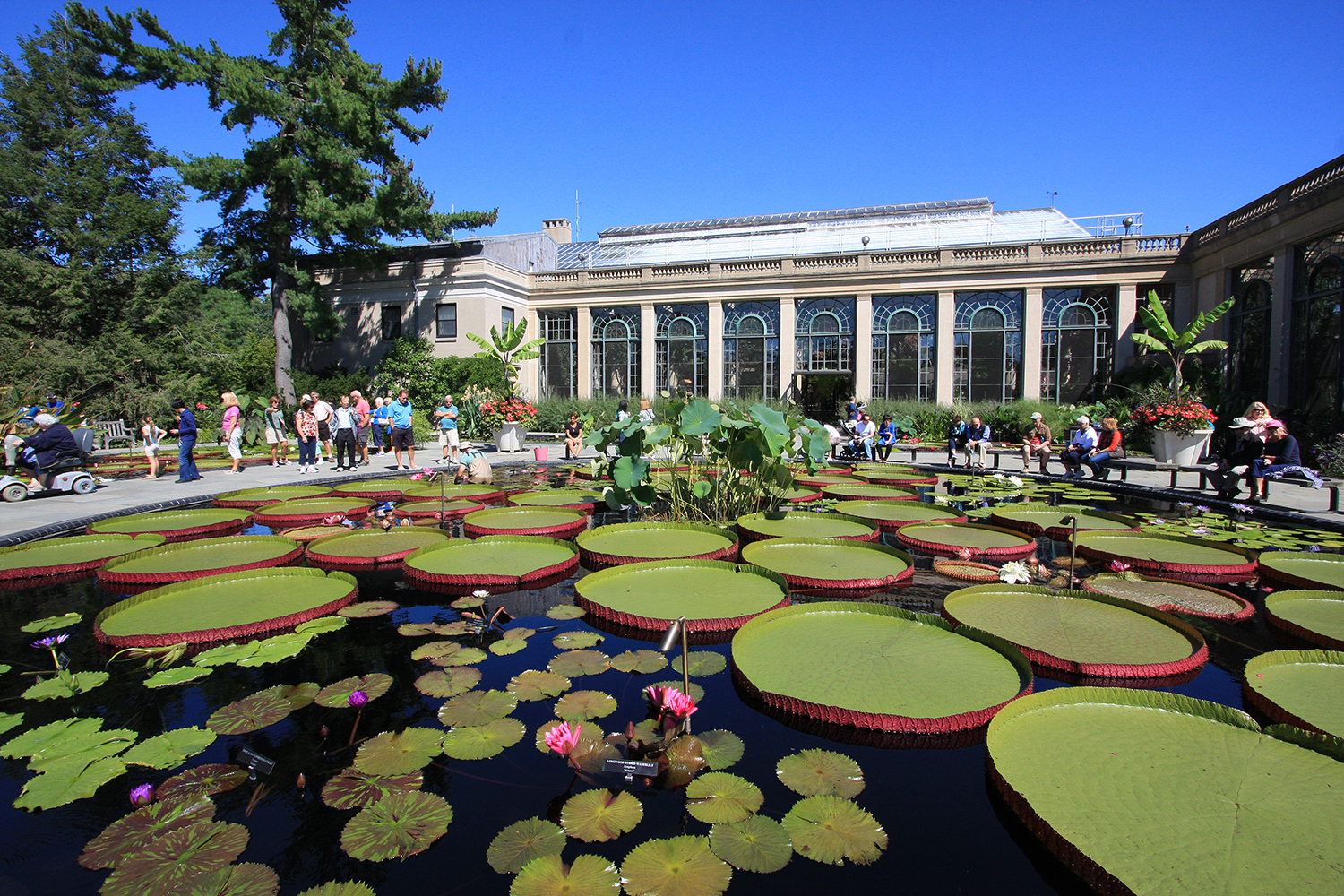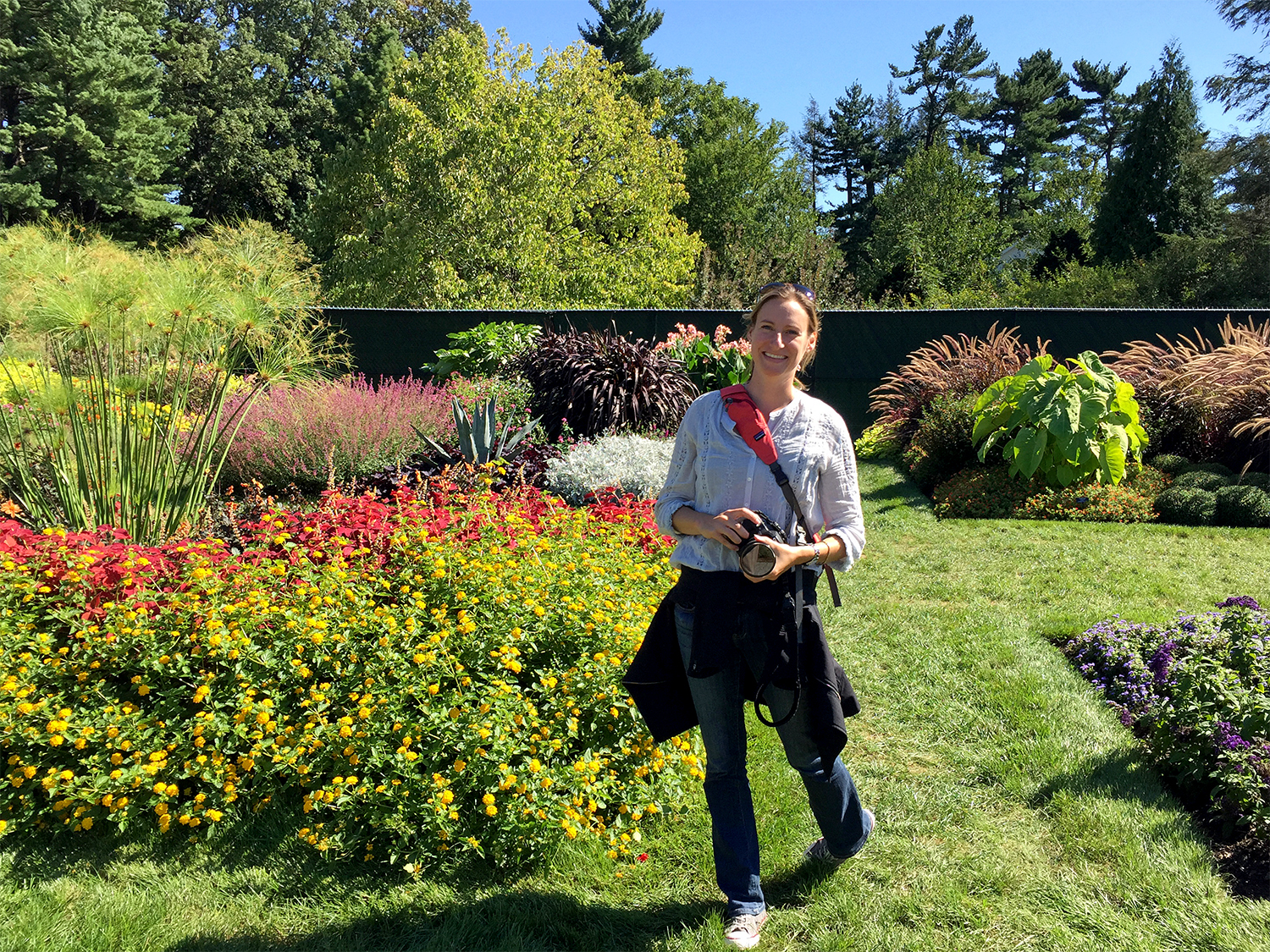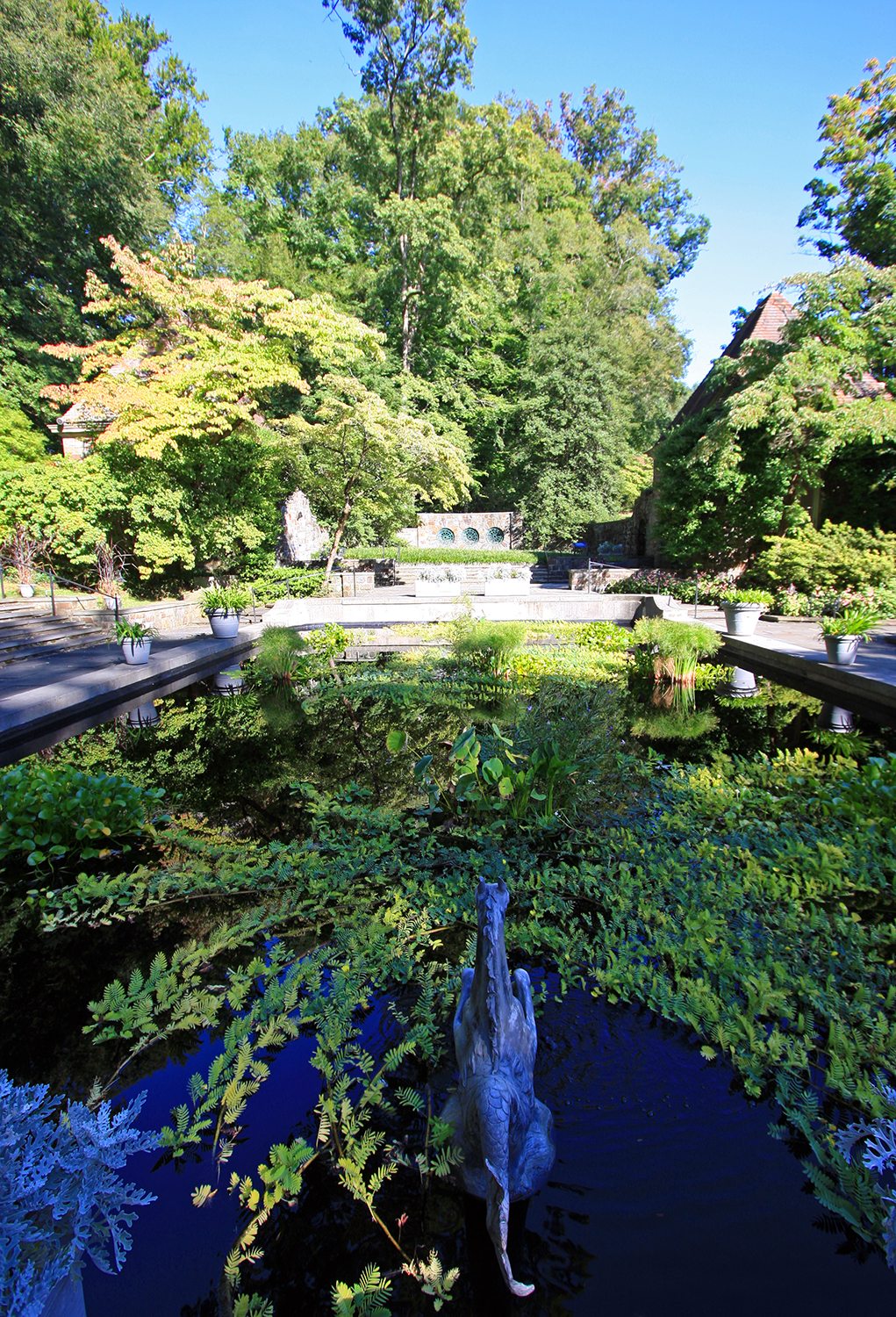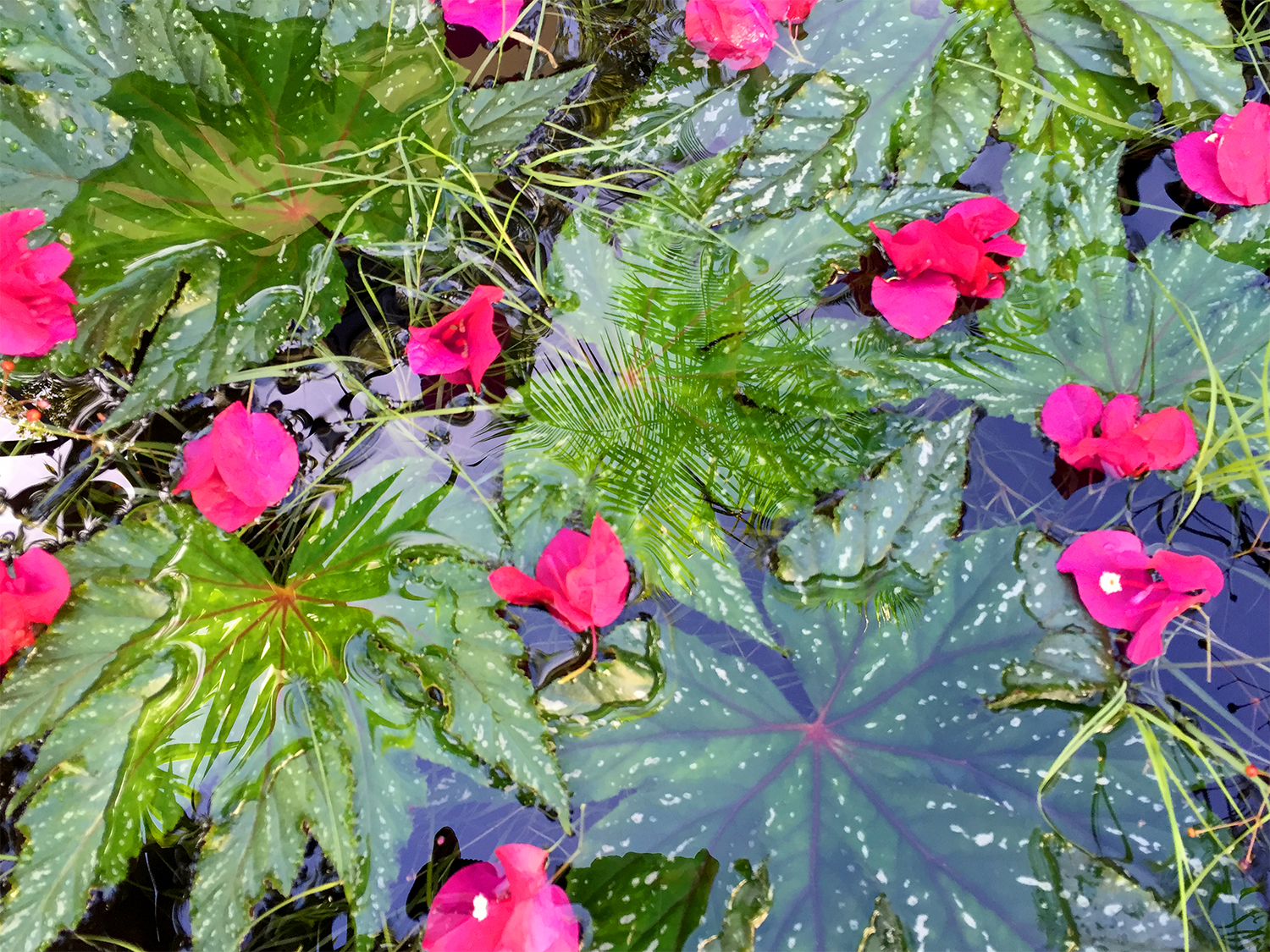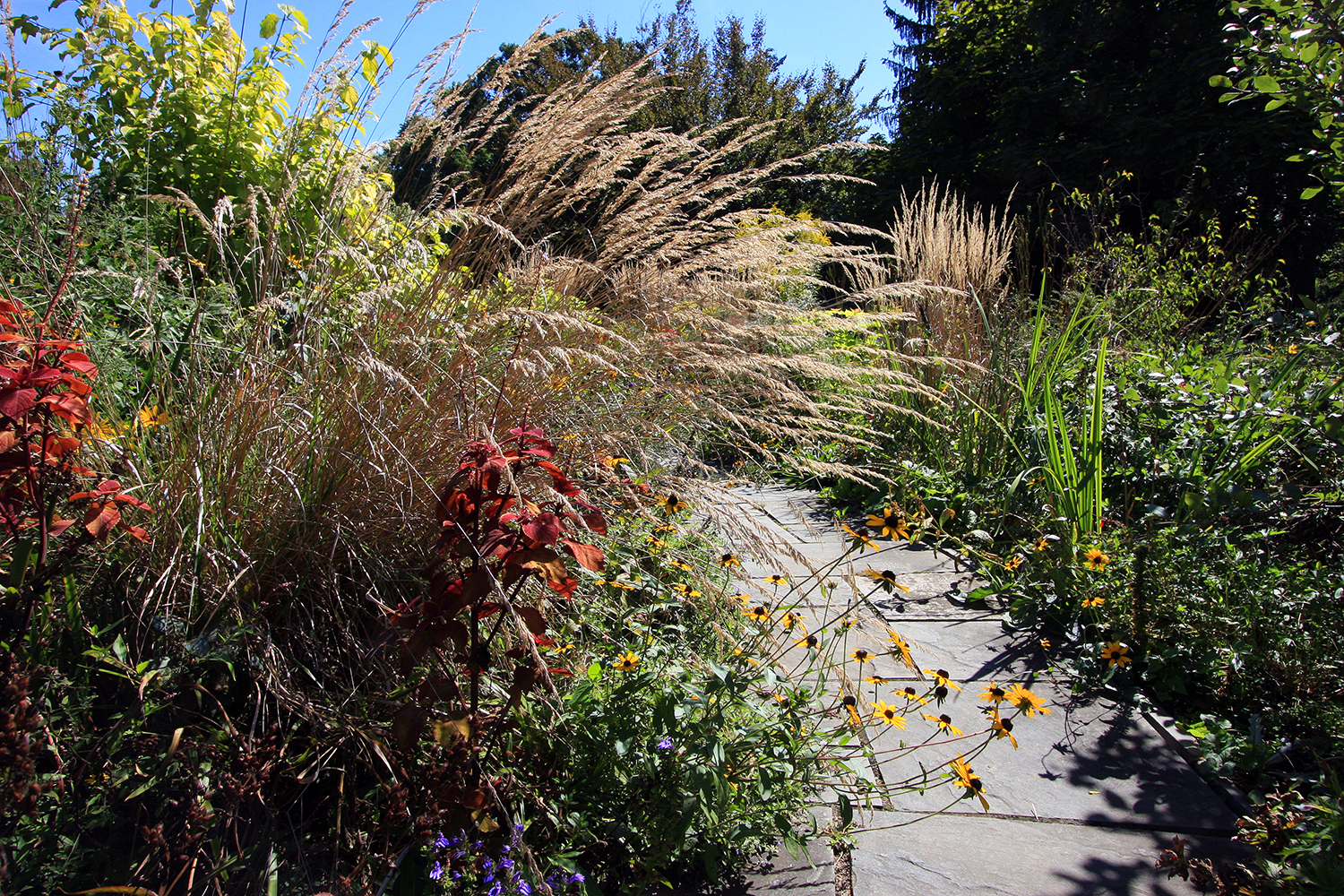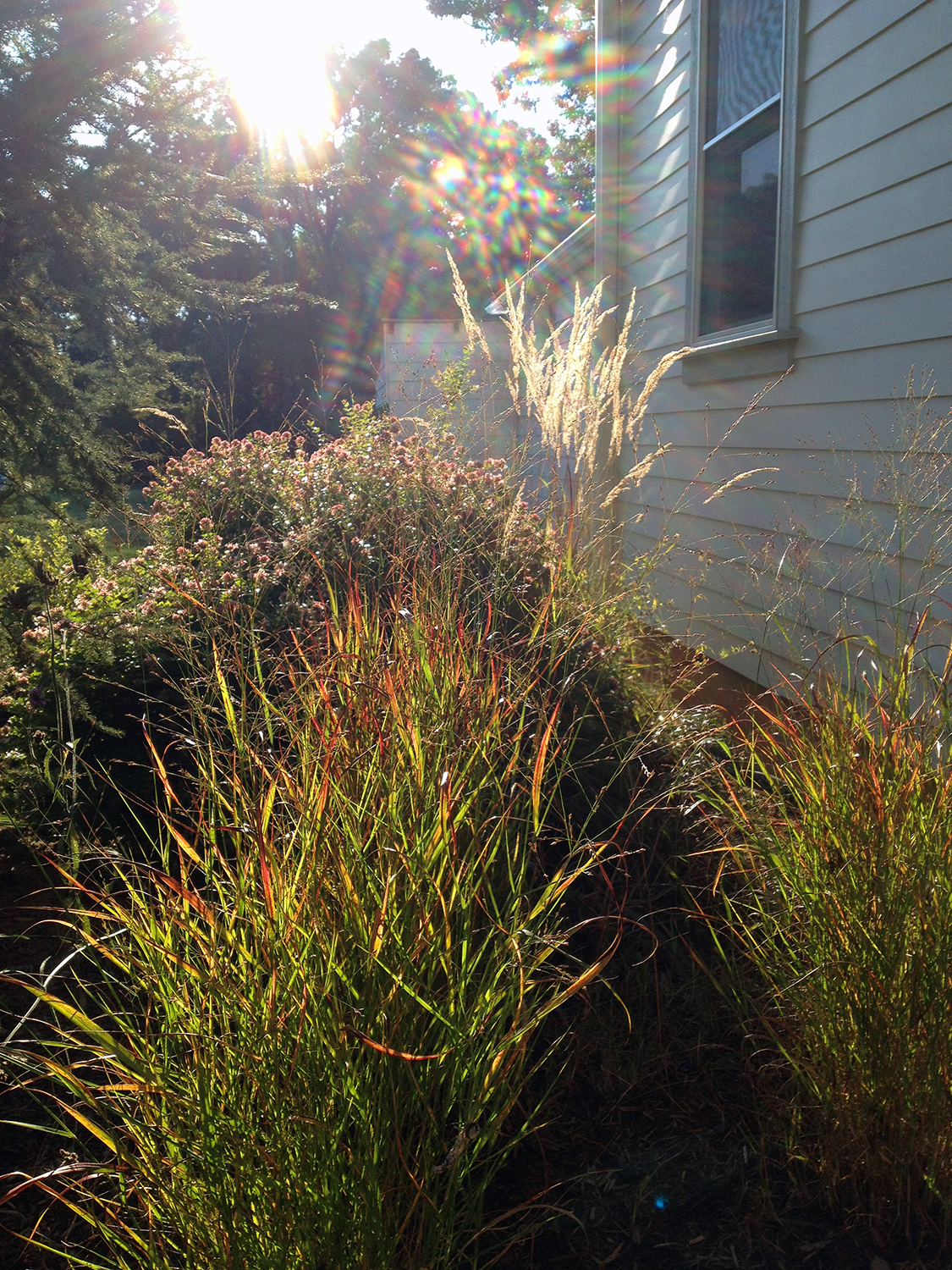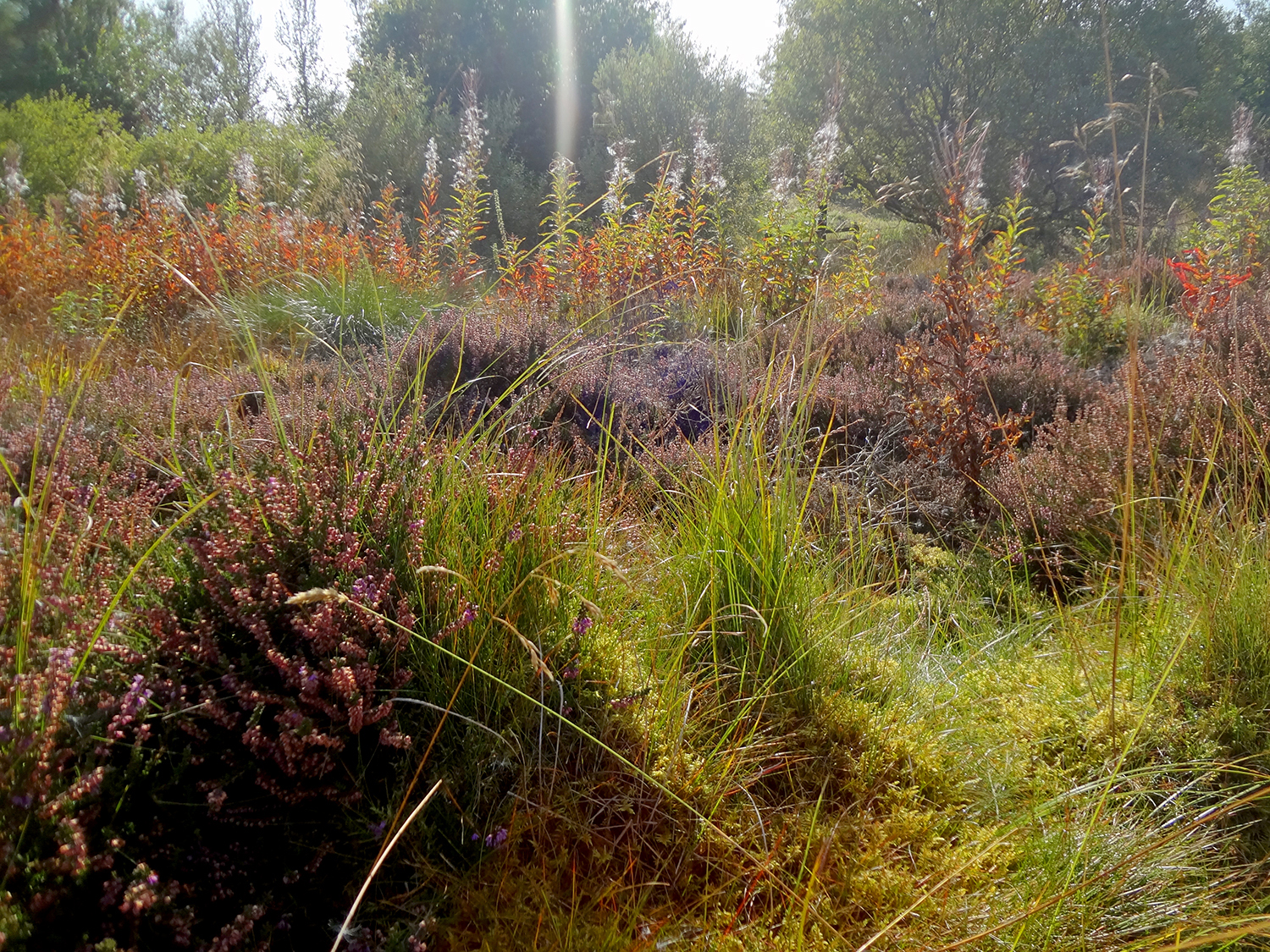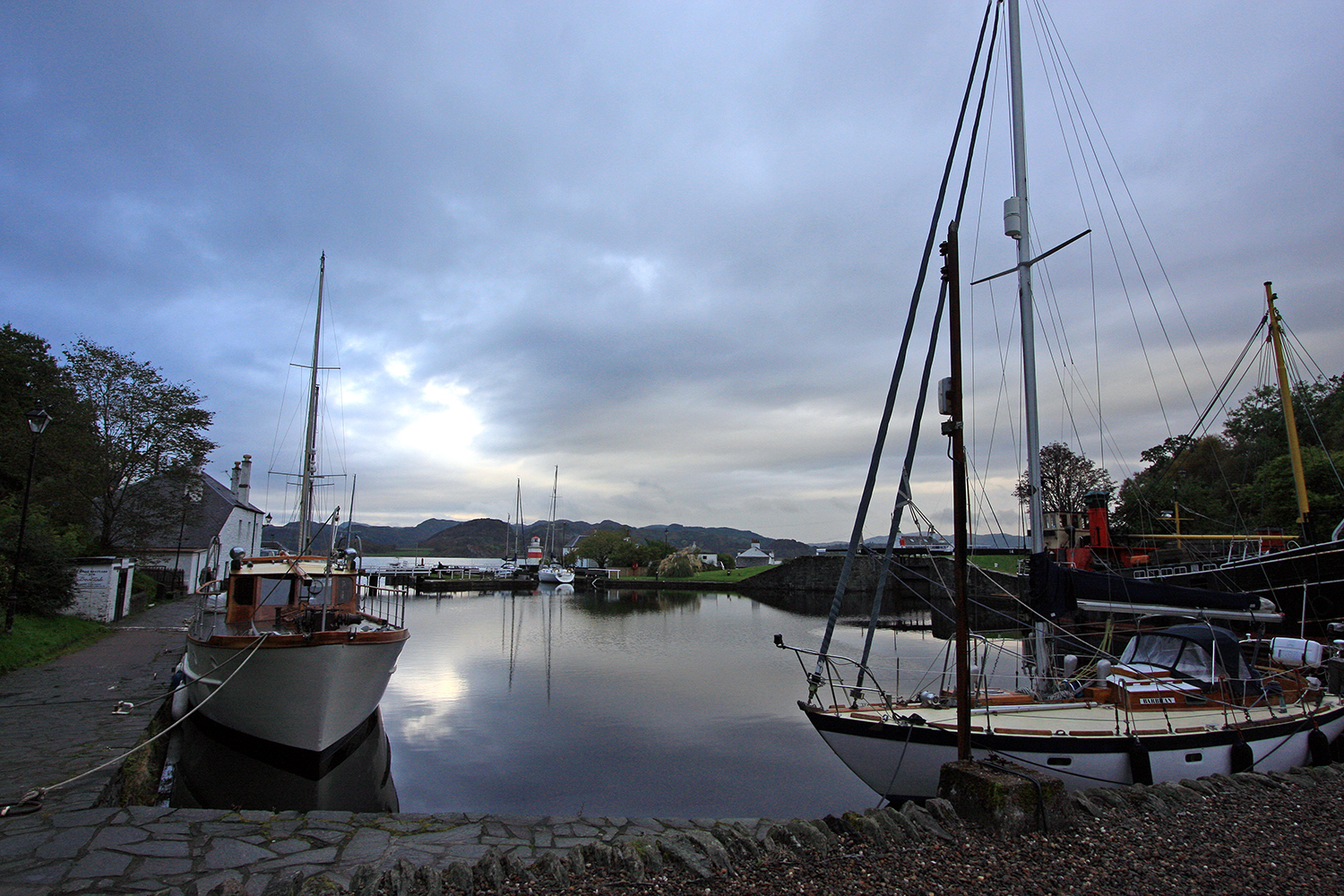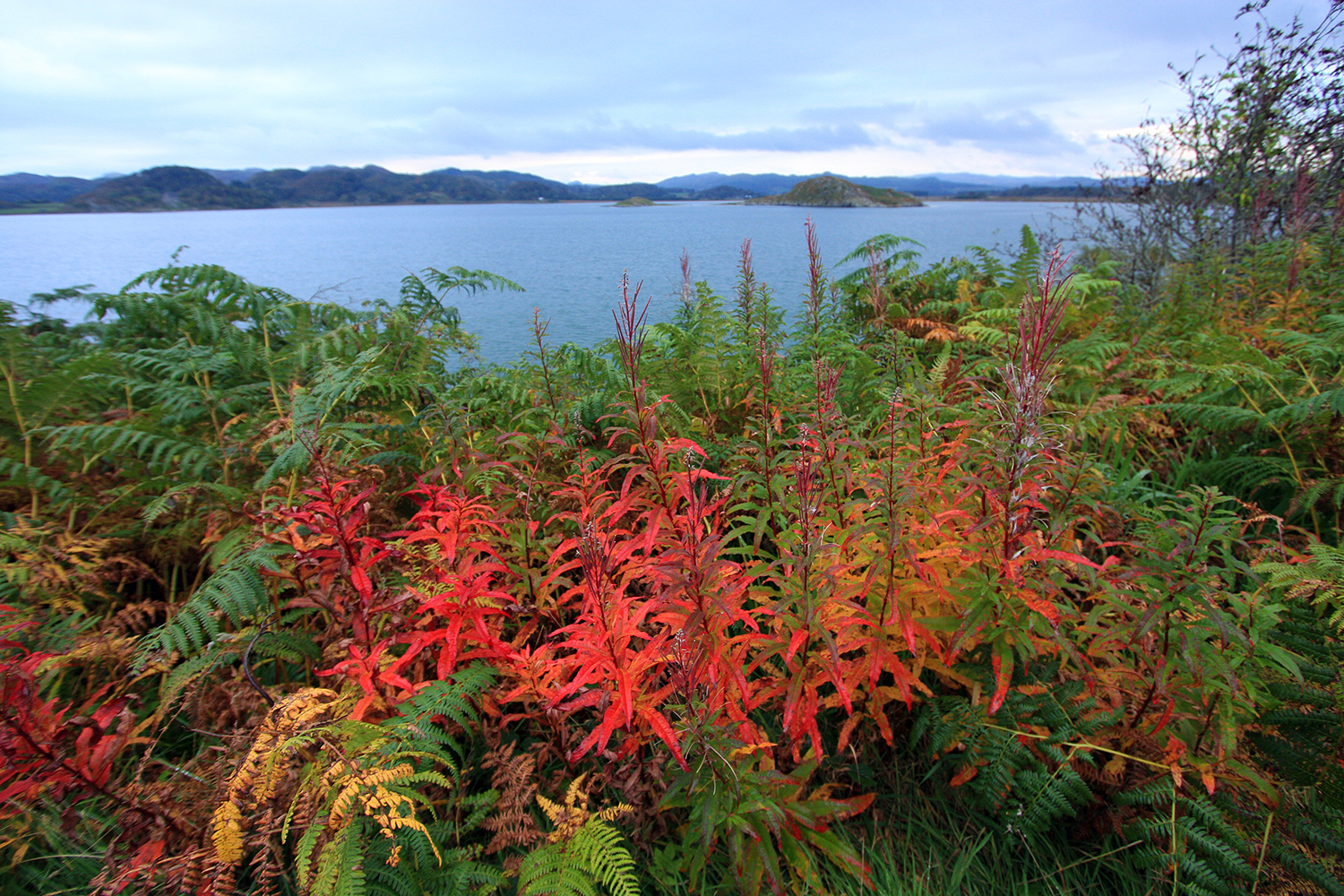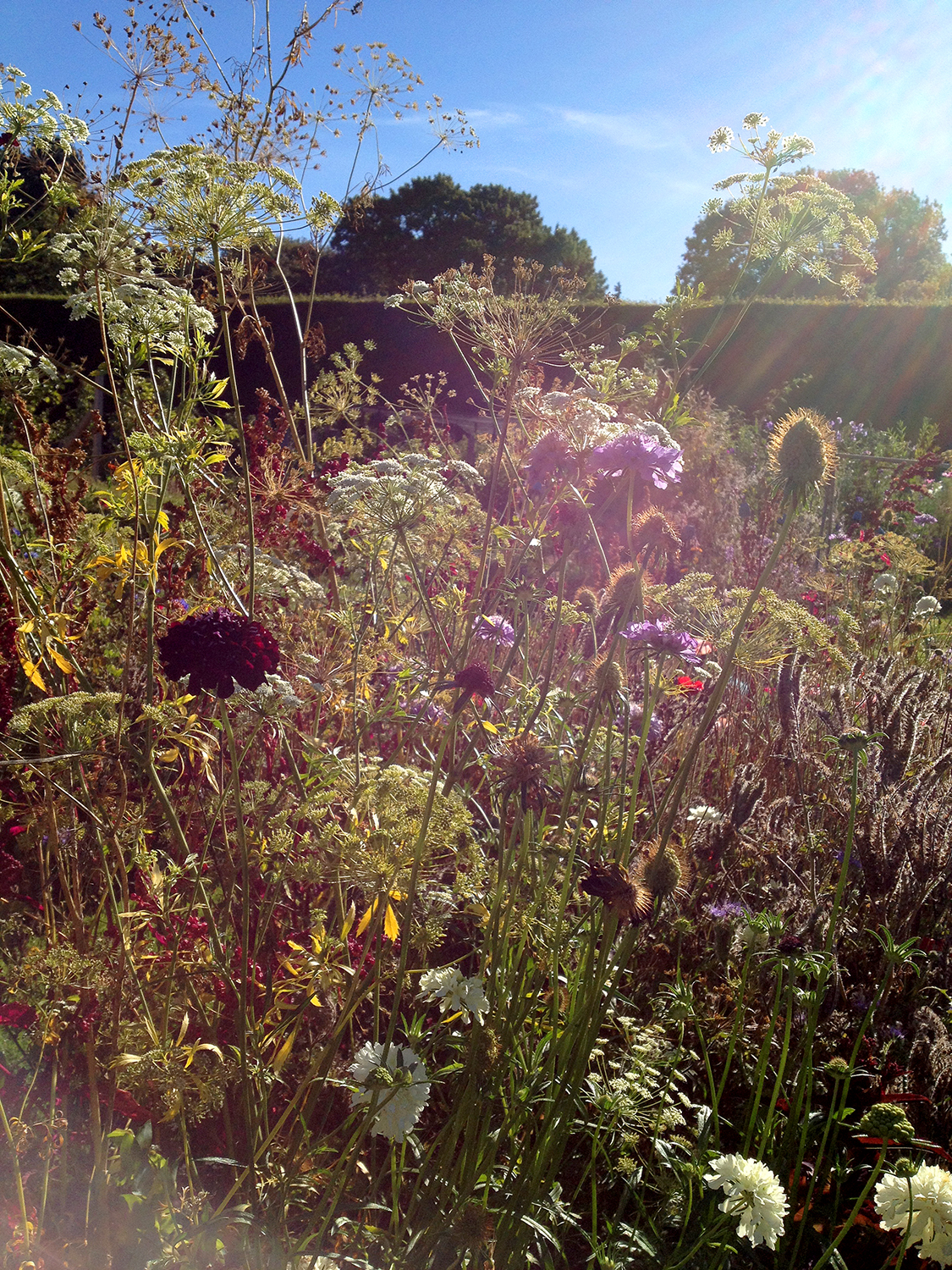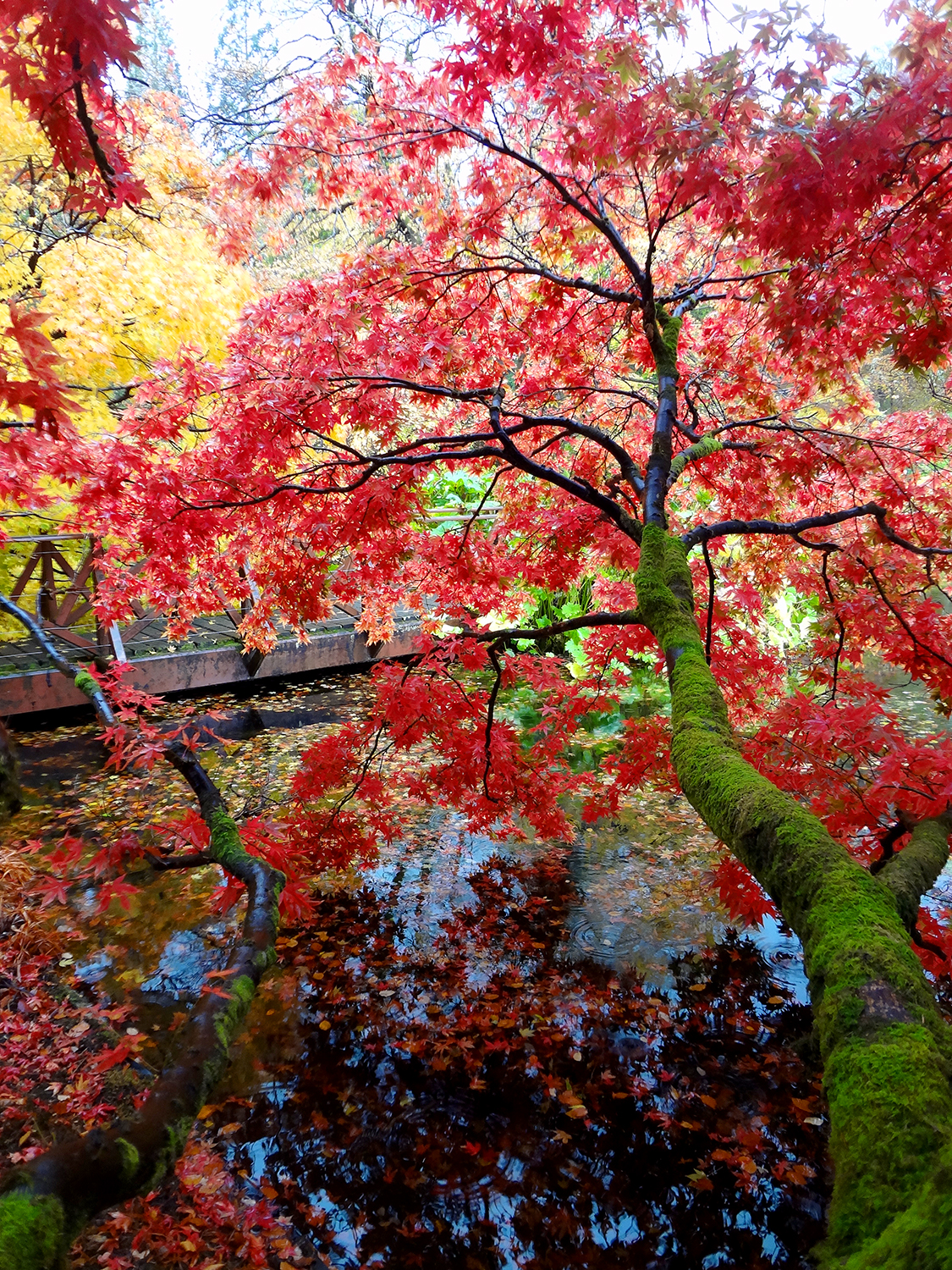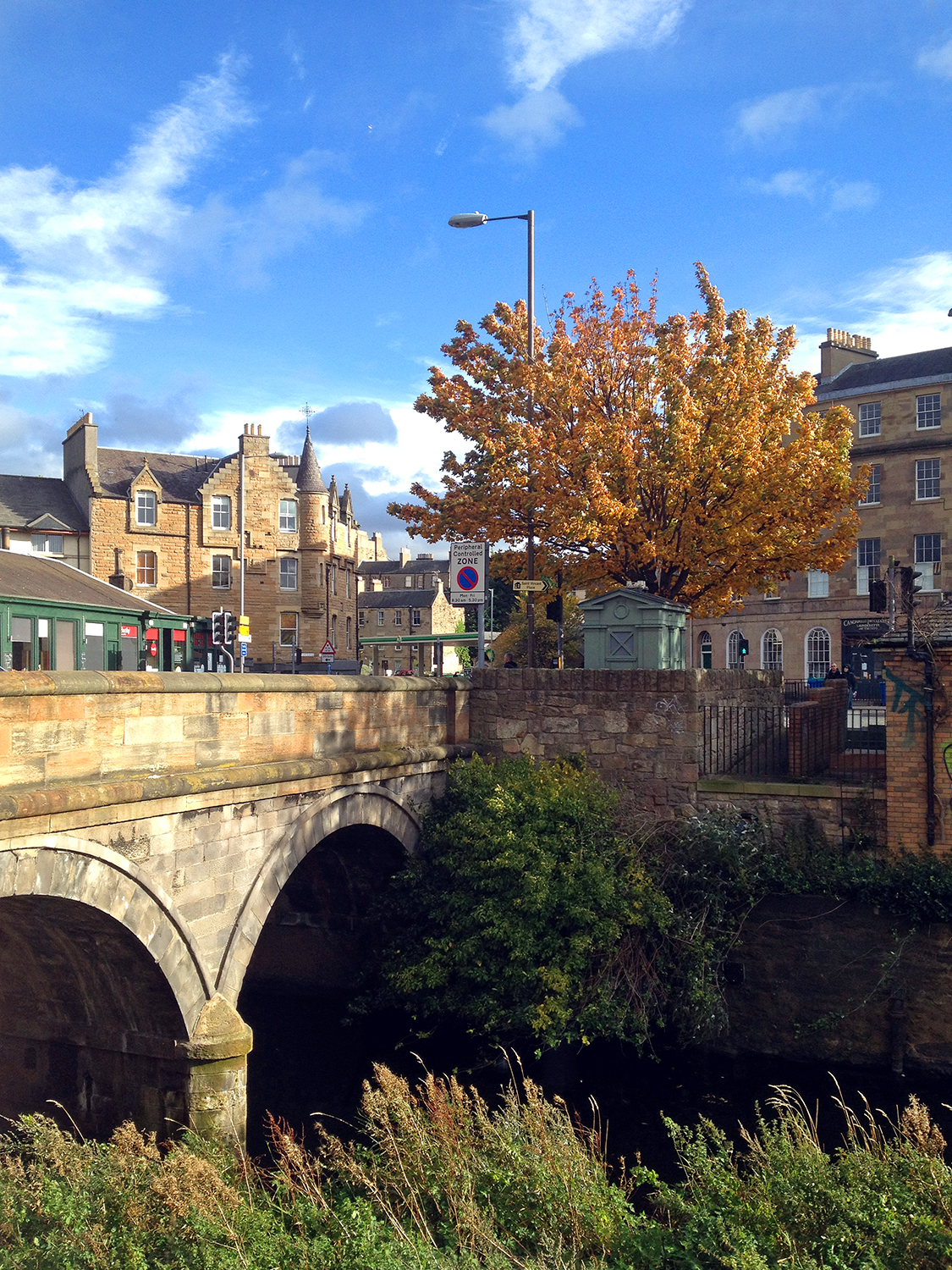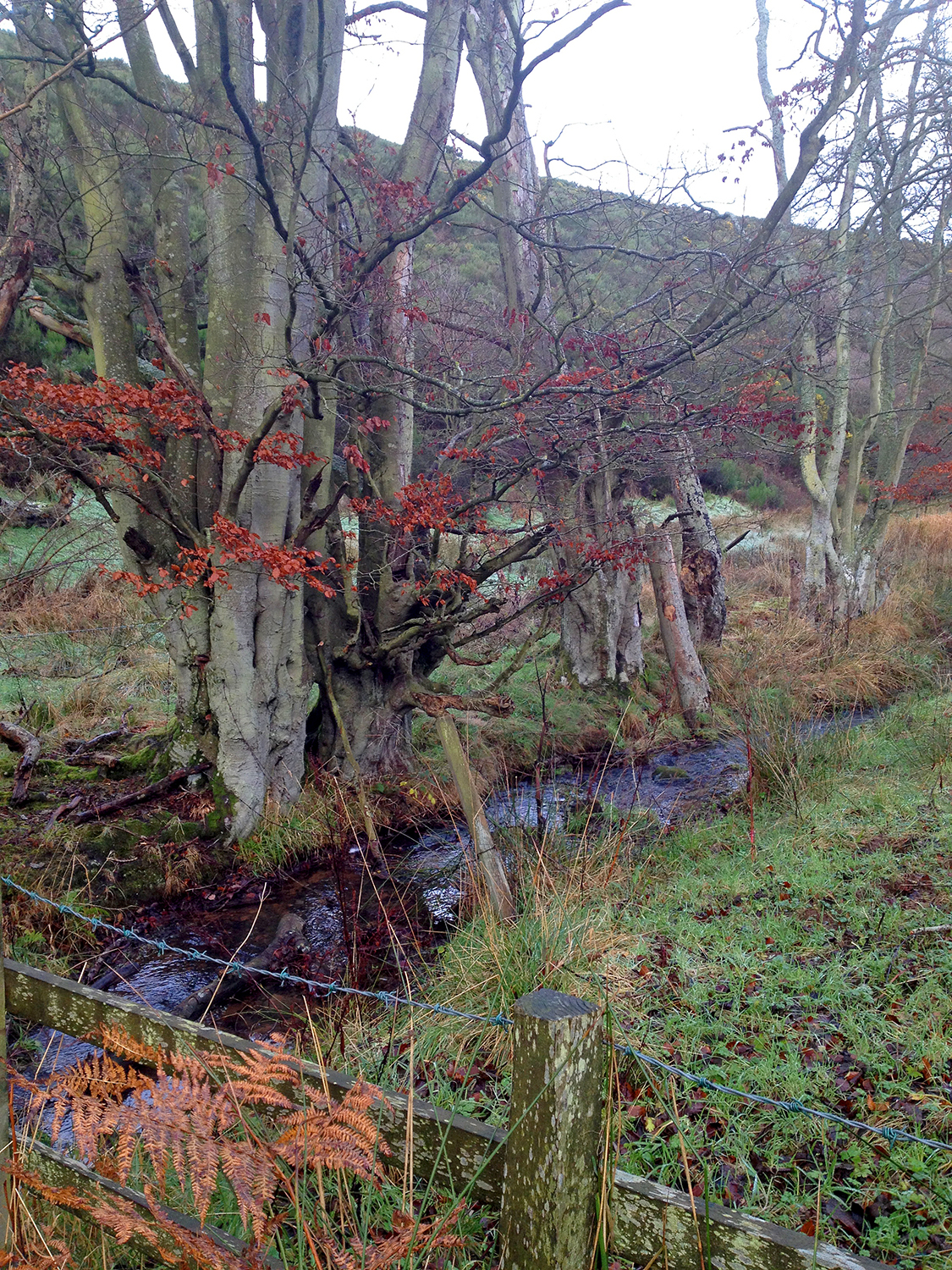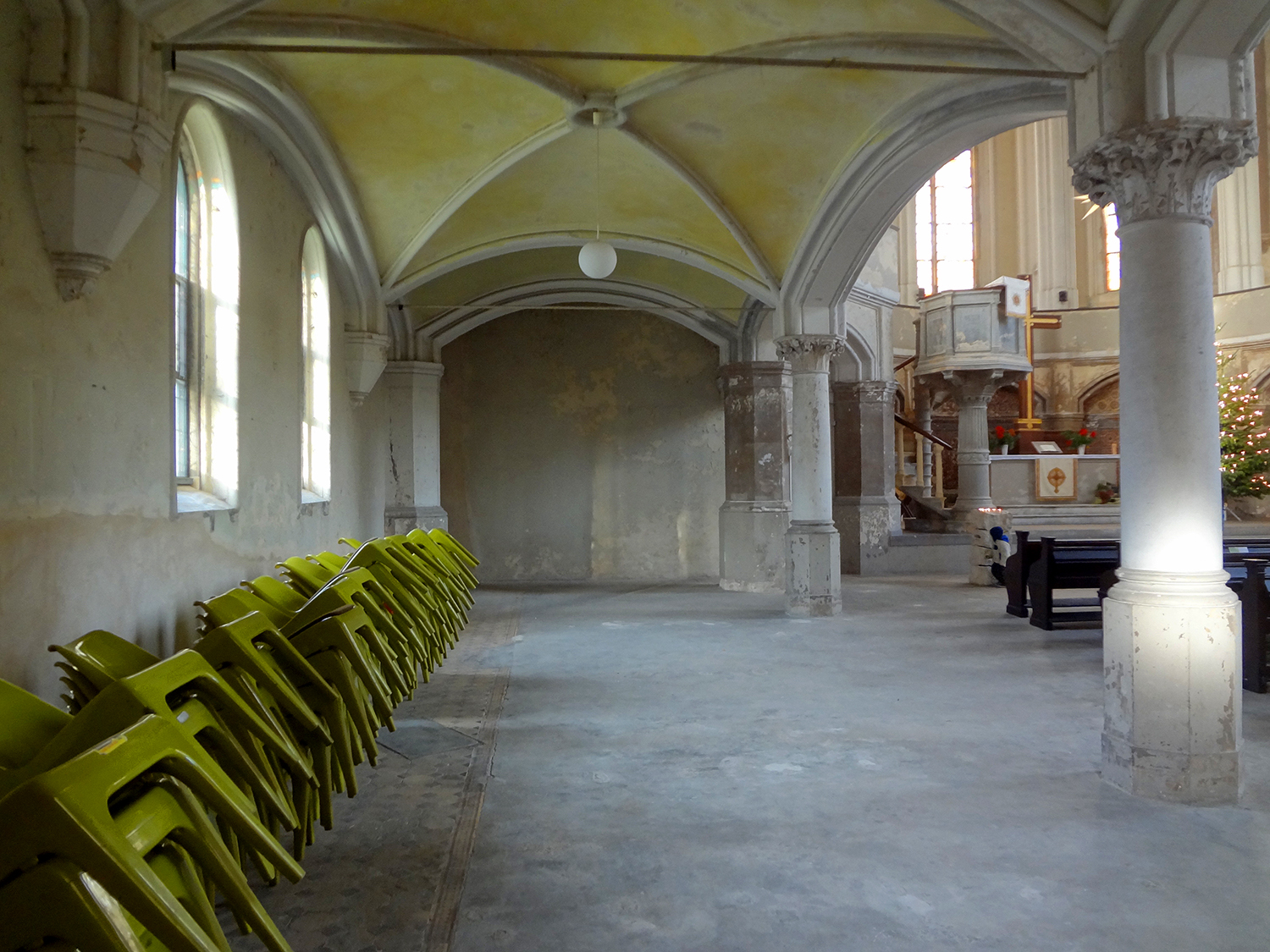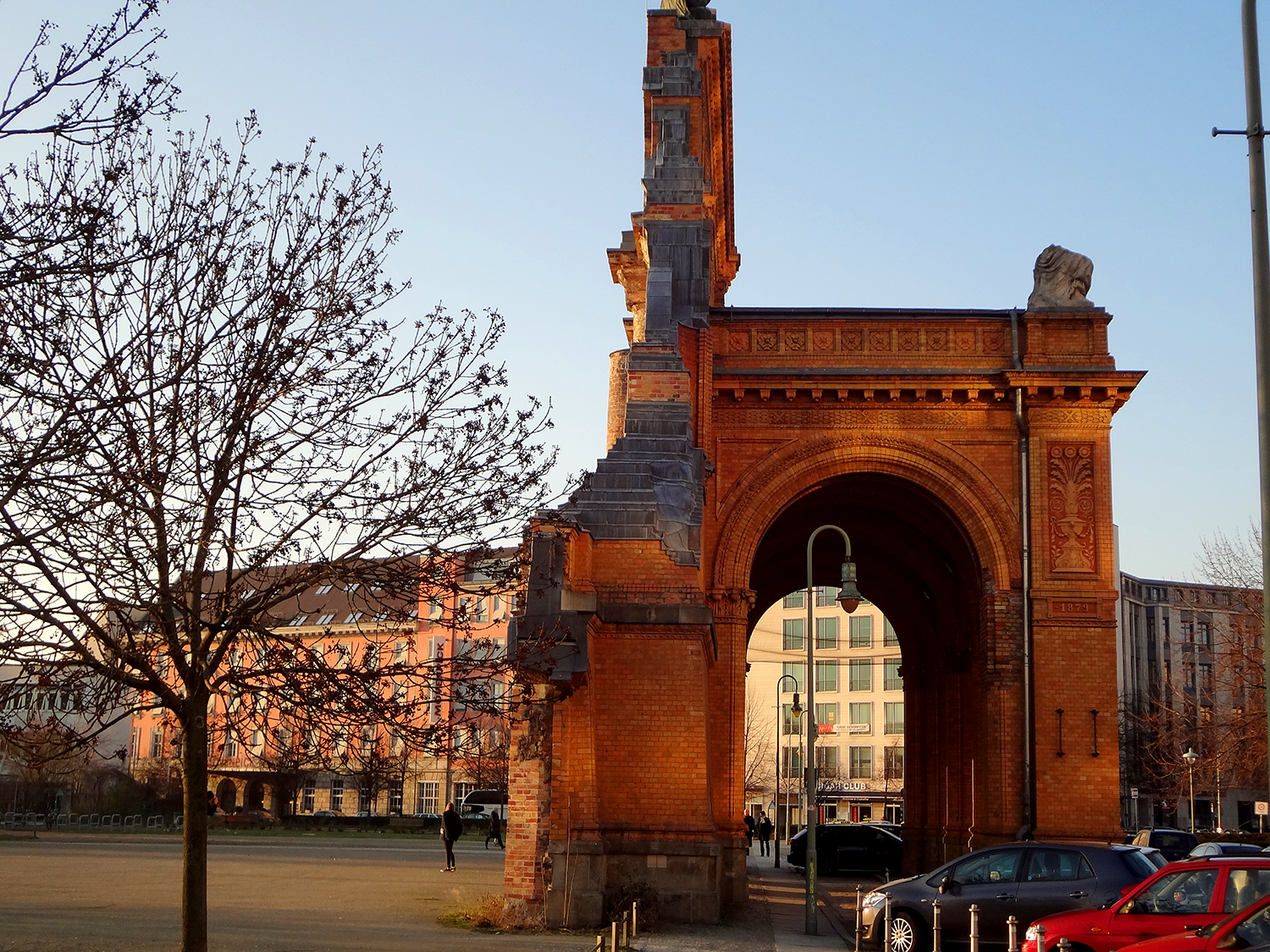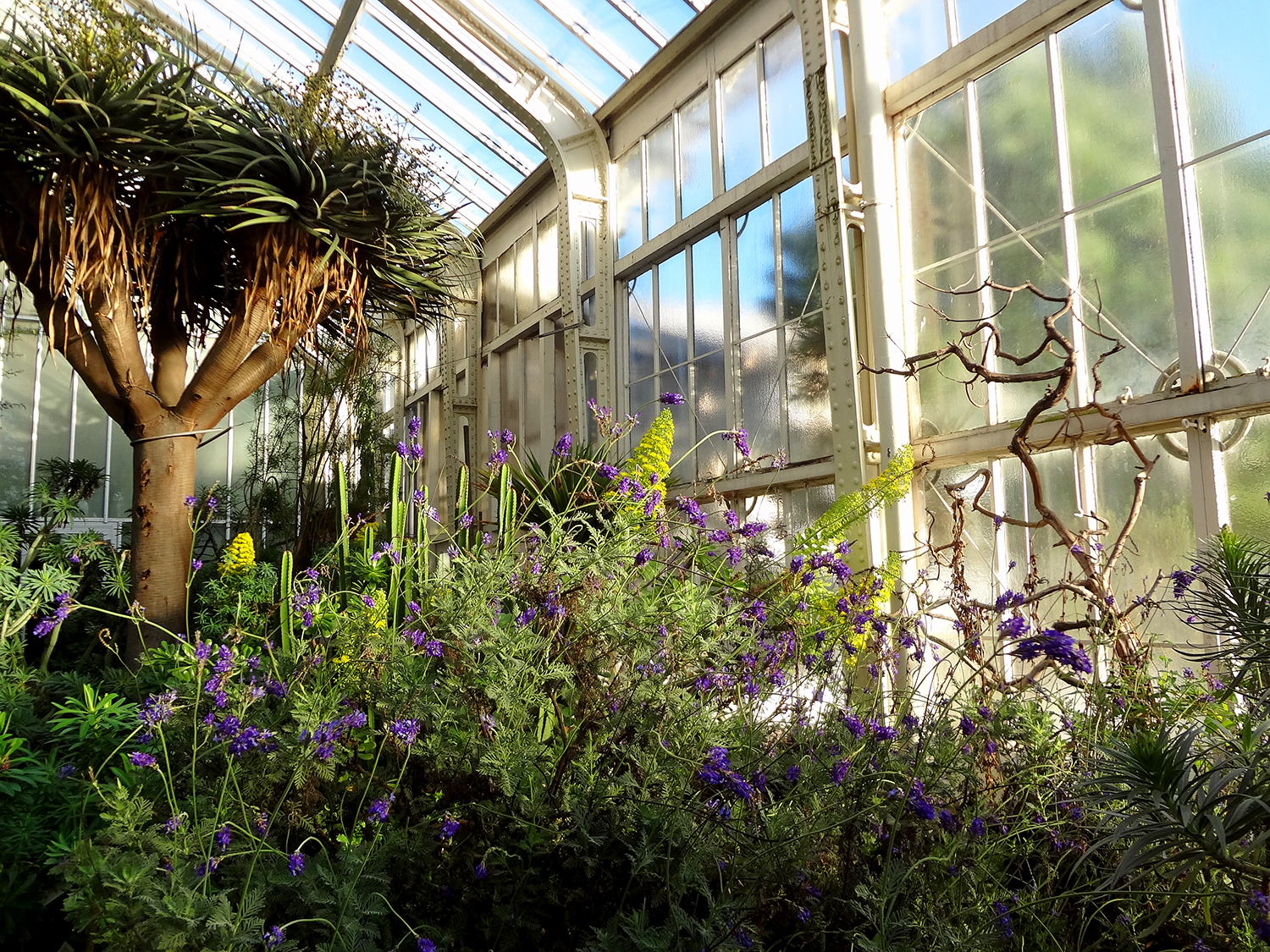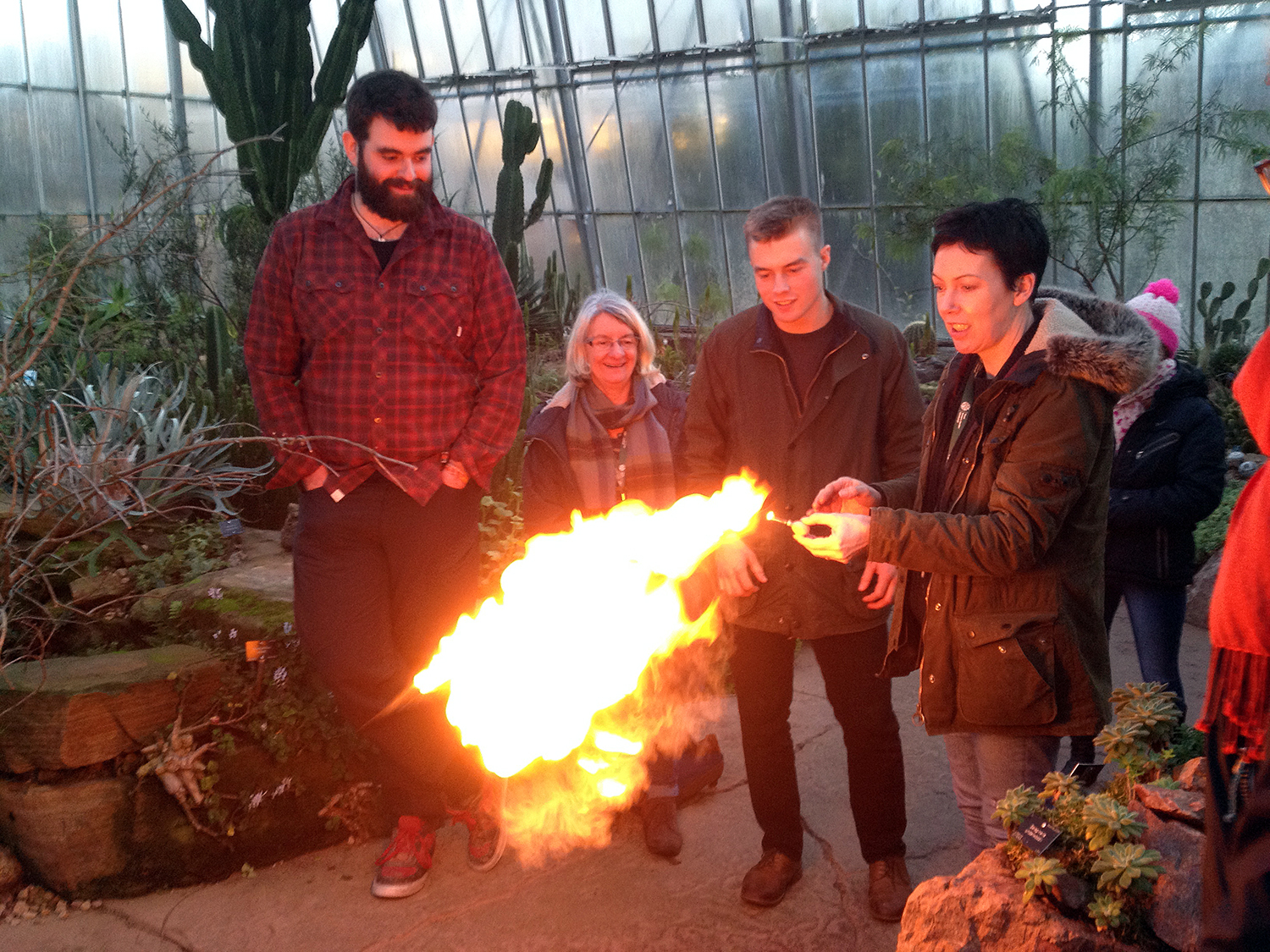The longest day of the year seemed as good as any to take a drive into the beautiful Perthshire countryside. The destination was Drummond Castle, and after a nice lunch and walk around the nearby town of Crieff my companion and I turned into the long and narrow beech-lined drive in search of what Historic Scotland calls "the best example of formal terraced gardens in Scotland."
I think it's safe to say that neither of us find Italianate-style gardens particularly compelling, and formal parterres usually leave us cold. We do know, however, that this style of garden is designed to impress, and on that count the initial view of the garden at Drummond succeeds.
A few steps beyond the castle courtyard the garden unfurls 60 feet below like the saltire it is meant to represent. Blue lavender, which wasn't yet in bloom, and silver Anaphalis form the flag of Scotland. This combination of Scottish patriotism with Italianate terracing and French elements makes for a garden that, although striking, left me feeling confused and questioning.
All gardens are amalgamations of changing fashions, historical periods, and owners. And Drummond, which has been in development for a mind-boggling five centuries, is no exception.
The castle dates to 1490, and the first garden was laid in the 1630s. The formal gardens and terracing were added 200 years later with the long vista through the far woods. This garden has seen war under Oliver Cromwell, Jacobite uprisings, and been walked by Queen Victoria and Prince Albert. In the 1950s the gardens were refurbished, and since 1978 have been maintained in a trust.
Even taking the cumulative effect of so much history into account, elements of the garden felt "stuck on" or assembled together without a sense of cohesion. I sat and looked at the garden for a good long while and found myself playing the editing game, wondering what could be subtracted to make the picture before me make sense. Would it be the bright white urns and sculptures? Or the occasional oddly shaped topiary? Or maybe additions were in order, perhaps in the form of more acid-yellow Acers, which effectively brought nice lightness to the composition.
Walking down through the garden wasn't particularly interesting but for the view back up to the castle. I suppose I'm just not a huge fan of box broderie infilled with not-yet-blooming roses and patchy bedding plants. And topiary usually just strikes me as bizarrely contrived. Or maybe I just needed a corset, some petticoats and a bit of courtly intrigue for this garden to stir me.
Instead, what was most interesting was the trick of perspective played in this garden, and how the formality disguises a significant slope through the five-acre site. It's objectively interesting, but hardly raises the pulse.
I did enjoy the kitchen garden, which is cleverly tucked into the south-facing slope behind the garden's far hedge. The brick walls made the perfect suntrap for growing climbing roses and espaliered fruit trees, and I'd love to have the potting sheds, cold frames, glasshouse, and fruit cage at my disposal.
I always find it funny to see plants that I am used to growing outside in Virginia, such as everything in these photos--figs, tomatoes, peppers, sweet corn, and grapes--being so coddled in Britain's colder climate. This method of indoor food cultivation has its roots in the Victorian-era rise of glasshouse innovation. To me it feels like it will never evolve out of antiquity, which leaves me equally charmed and frustrated.
I was pretty impressed, and jealous, of this amount of bench space devoted just to Streptocarpus hybrids. My own collection is quickly outgrowing the only window in my flat that gets even marginally enough light to keep the plants alive.
Incidentally you may have seen Drummond Castle on television just this year and not even known it. The gardens stood in for Versailles in the second season of Outlander, a show worth watching because it is thought-provoking, beautiful (particularly the costuming), and features one of my favorite female protagonists in the character of Claire.
So have a look at Outlander to catch a glimpse of Drummond, or visit it yourself if you're headed Perthshire-way. Though it didn't move my soul, it's still a striking garden that I'm glad to have visited on the longest day of 2016.
